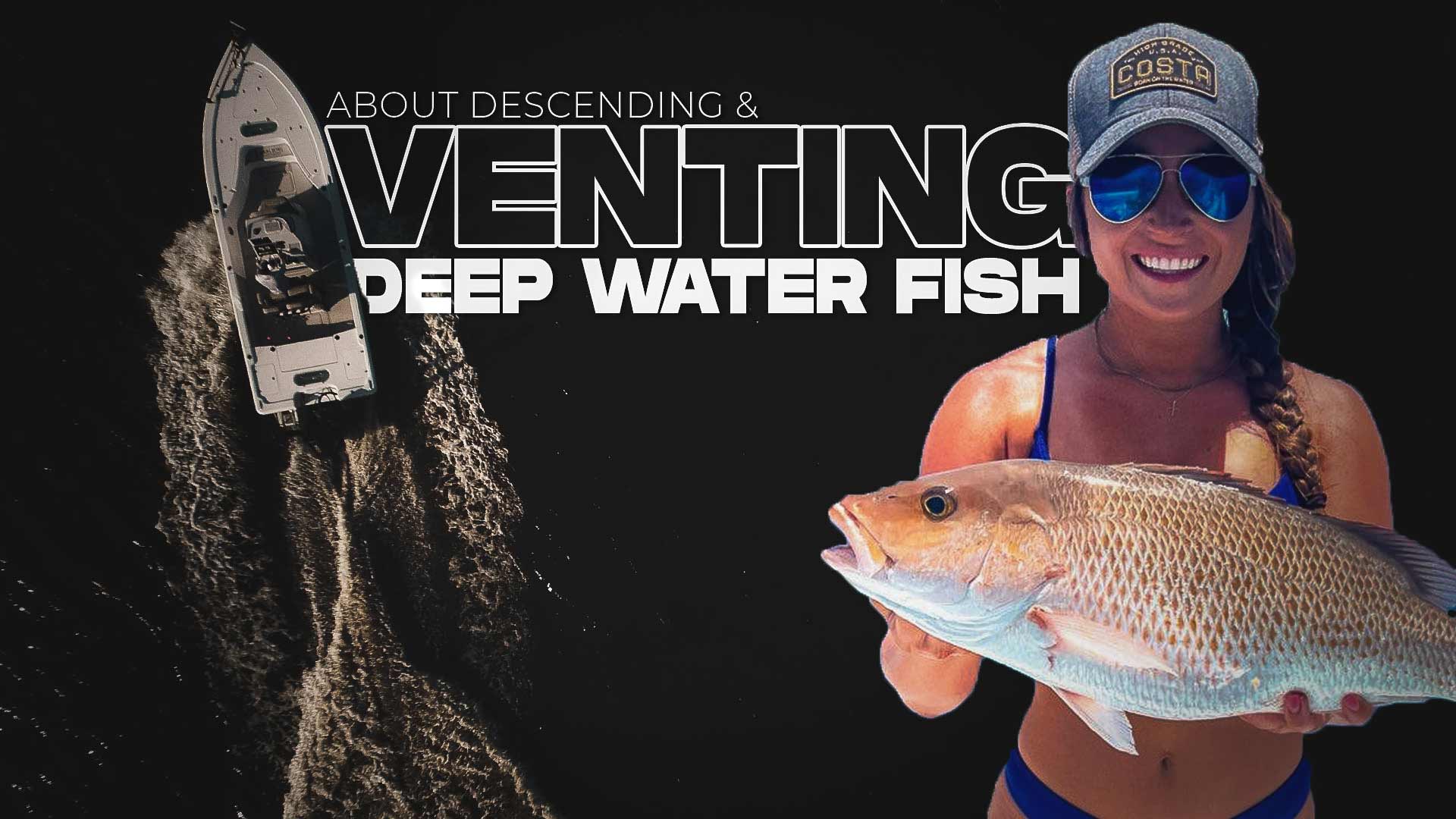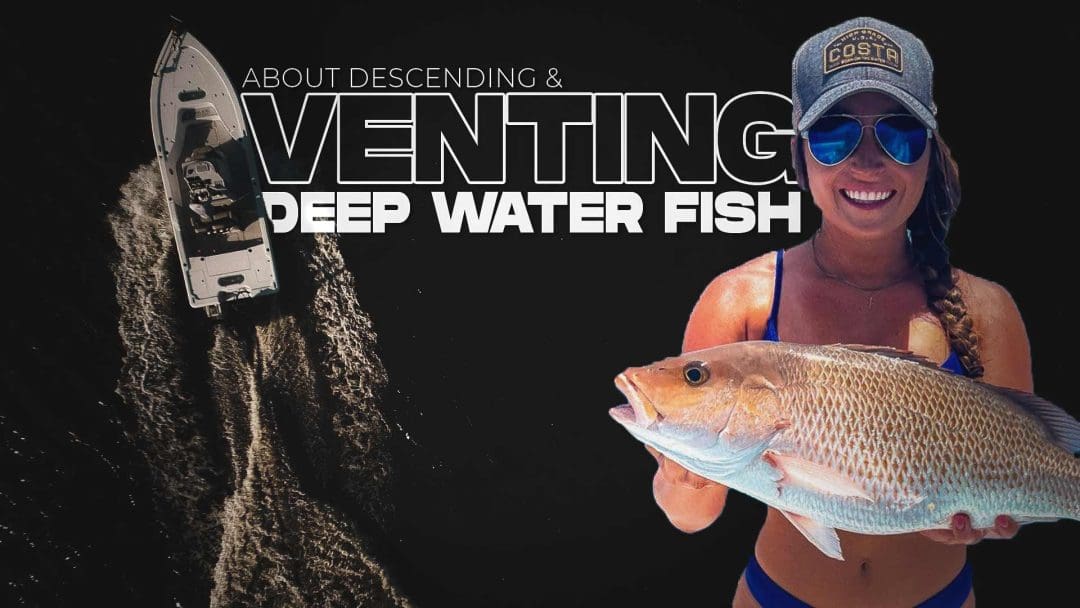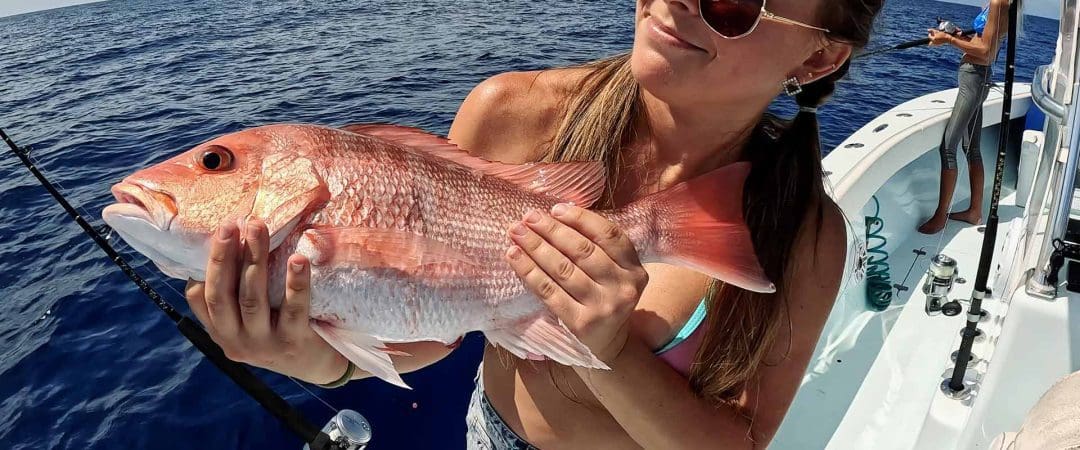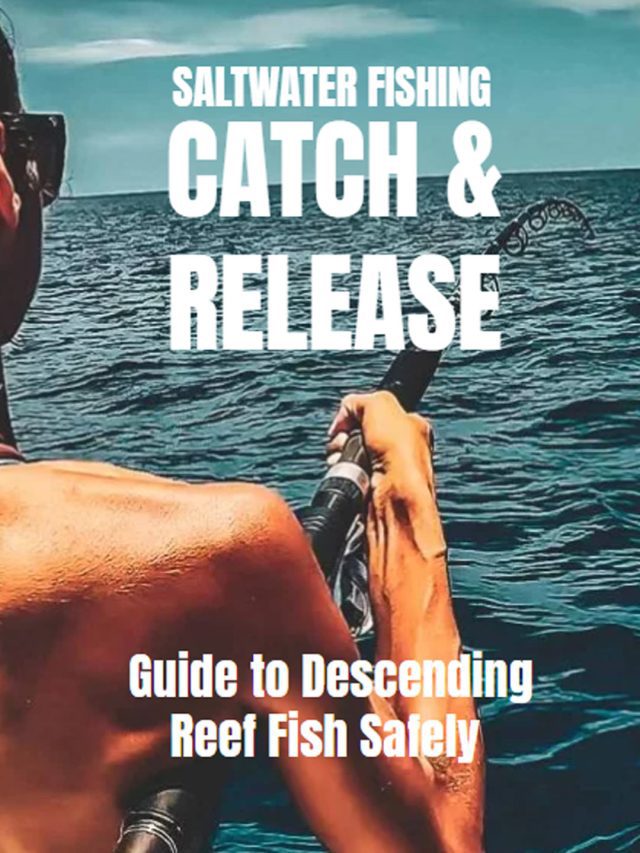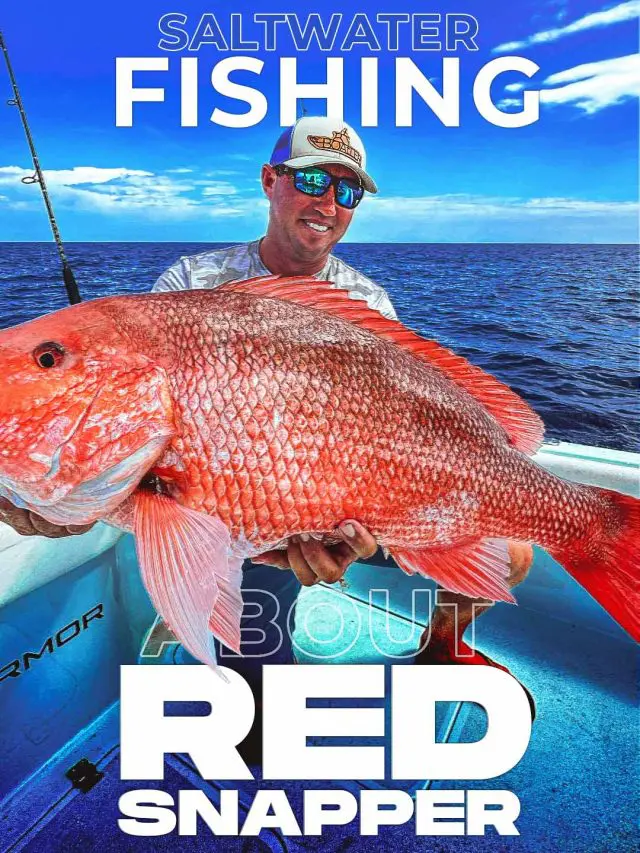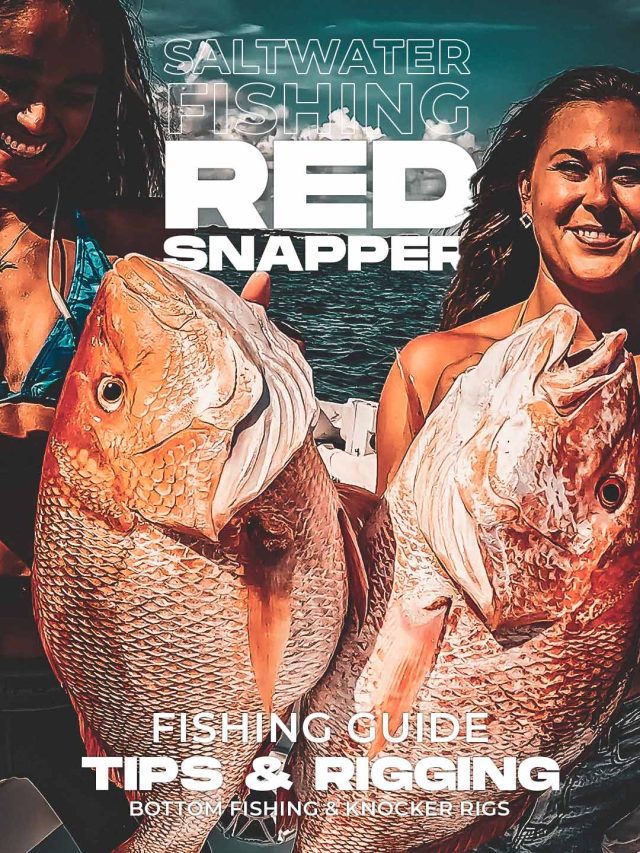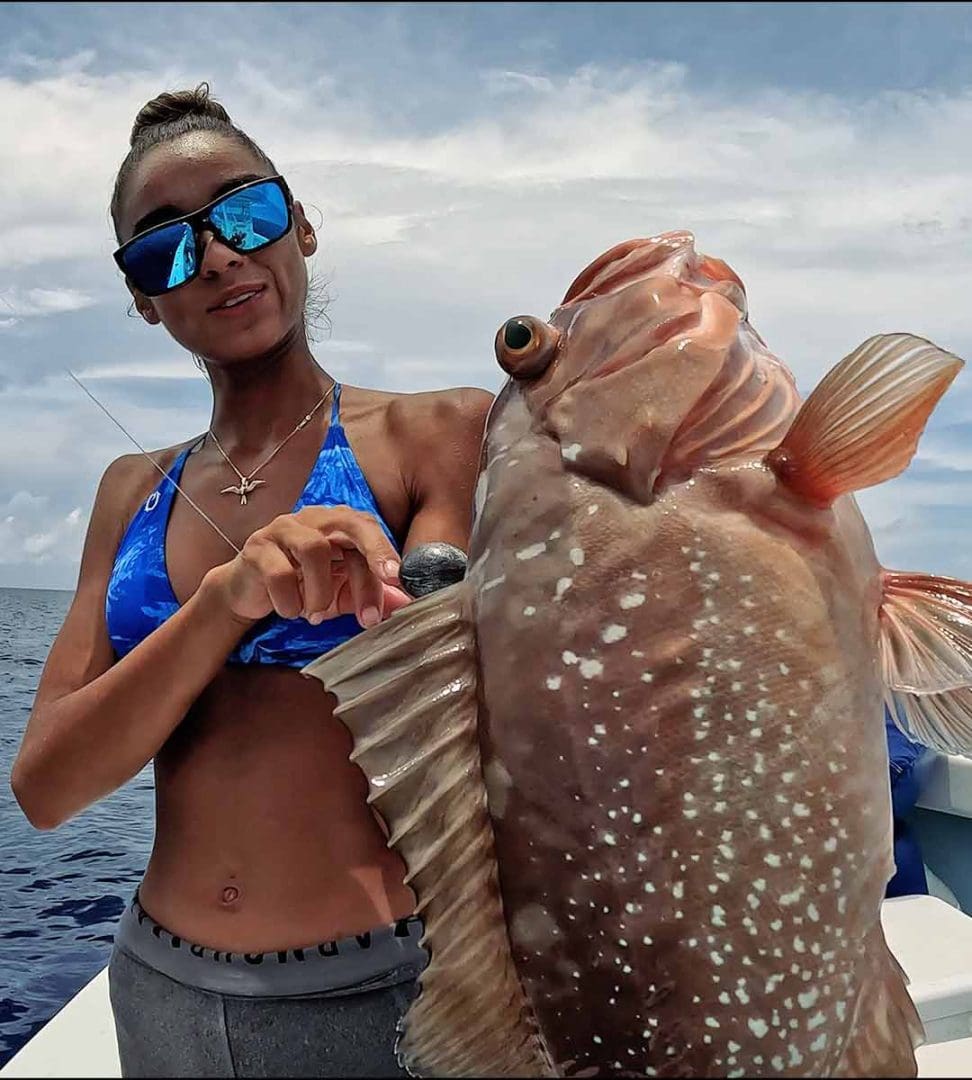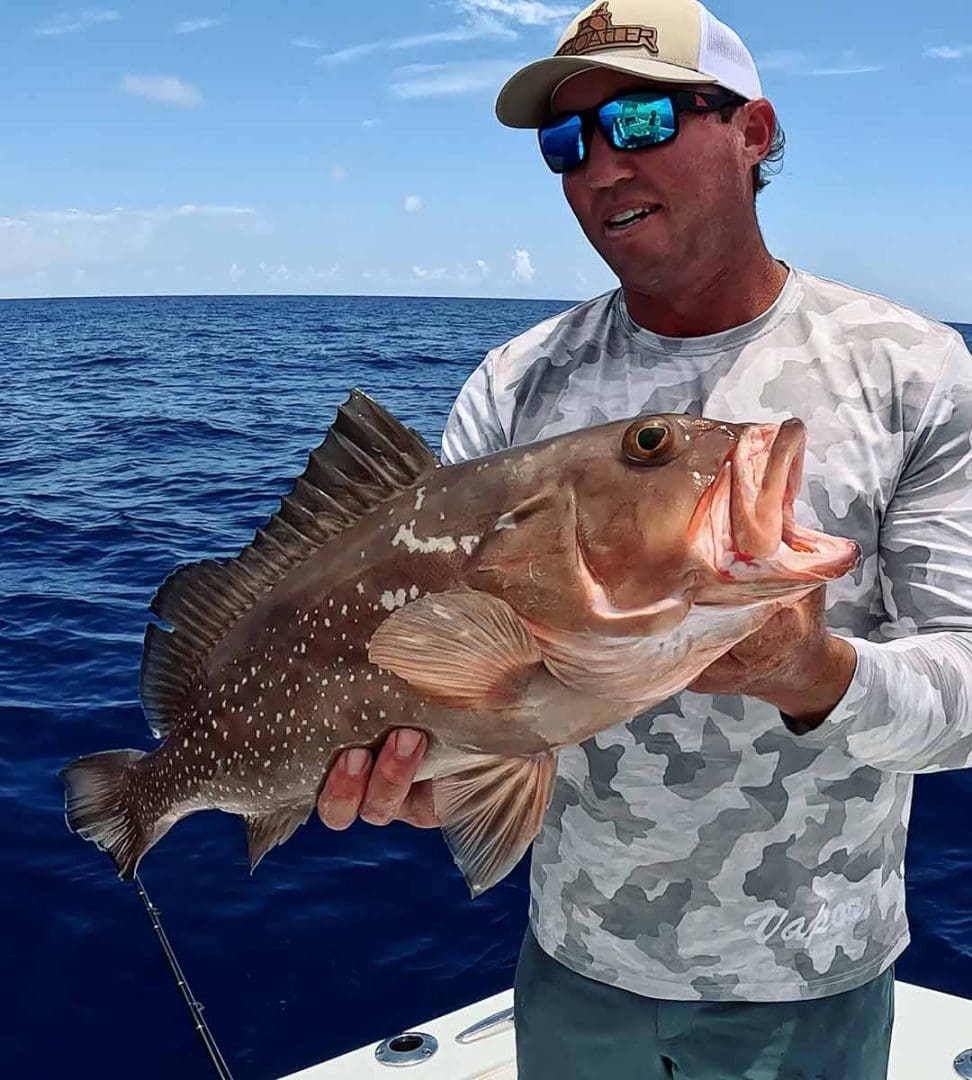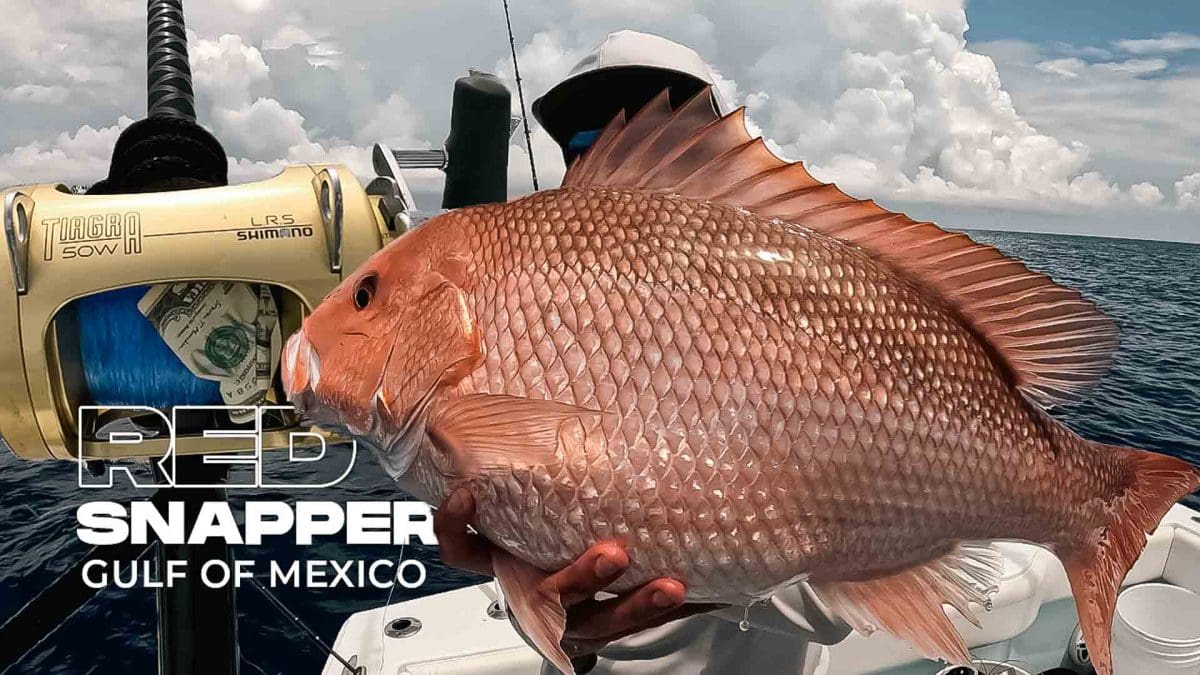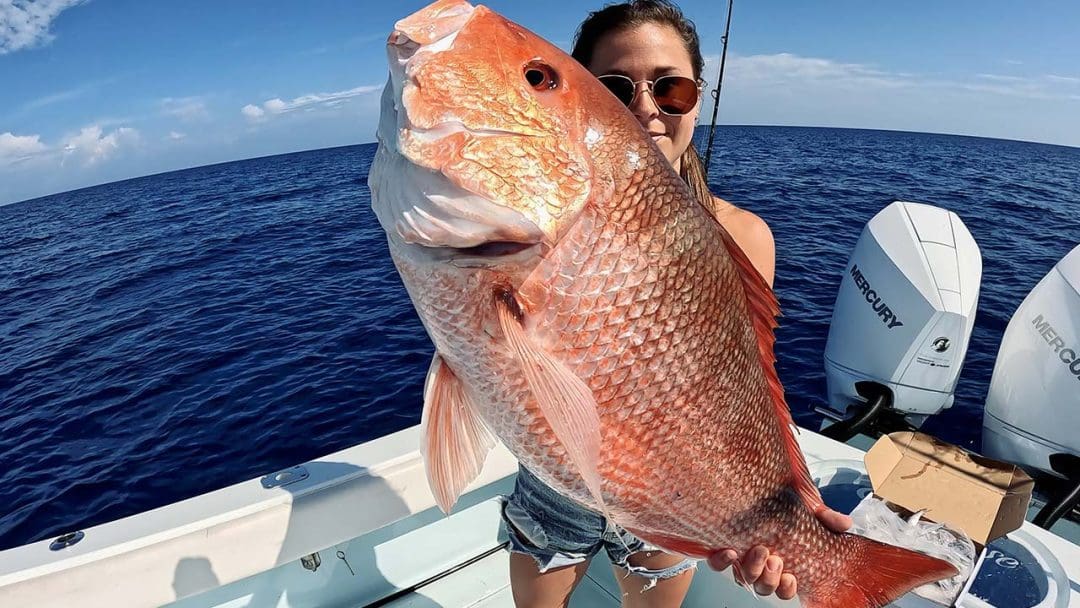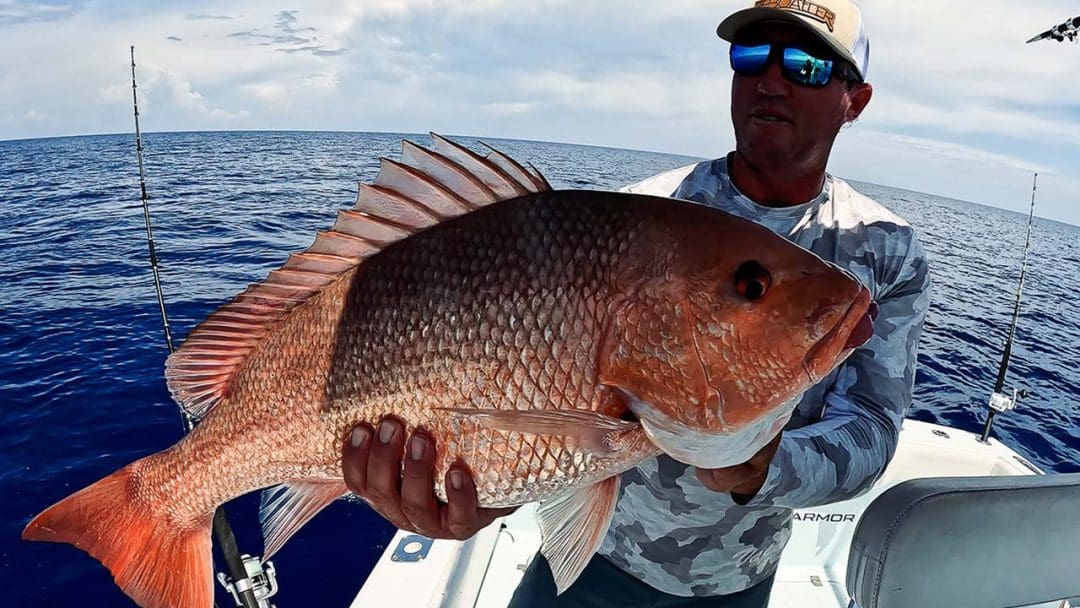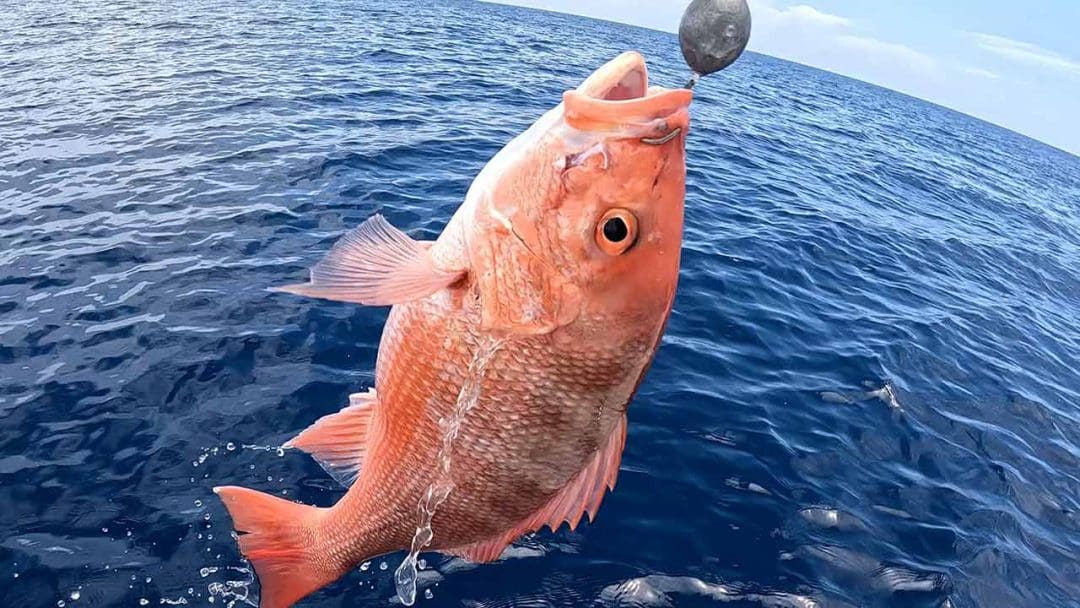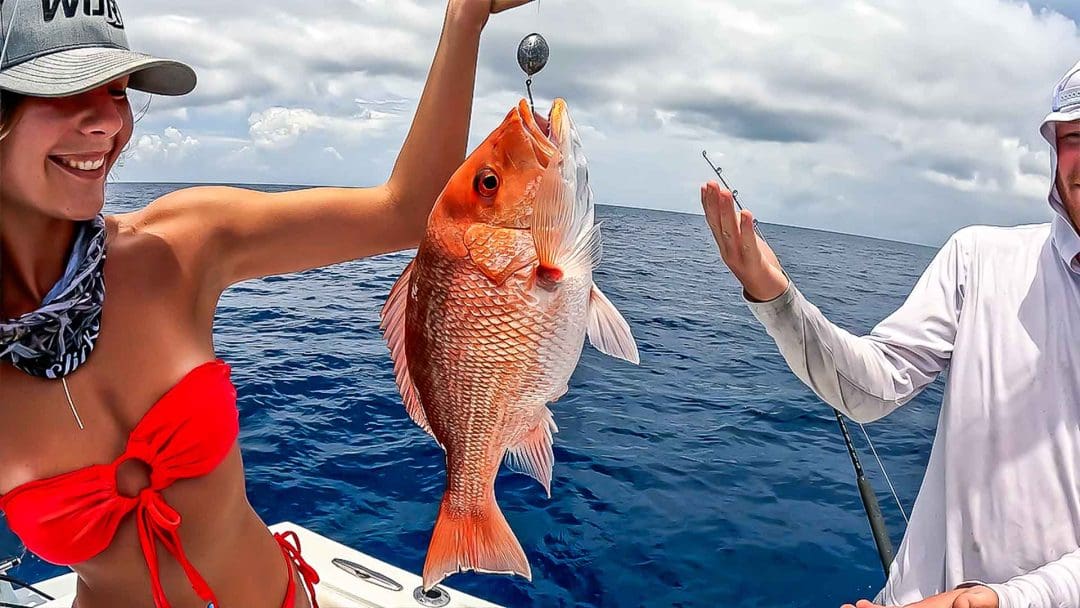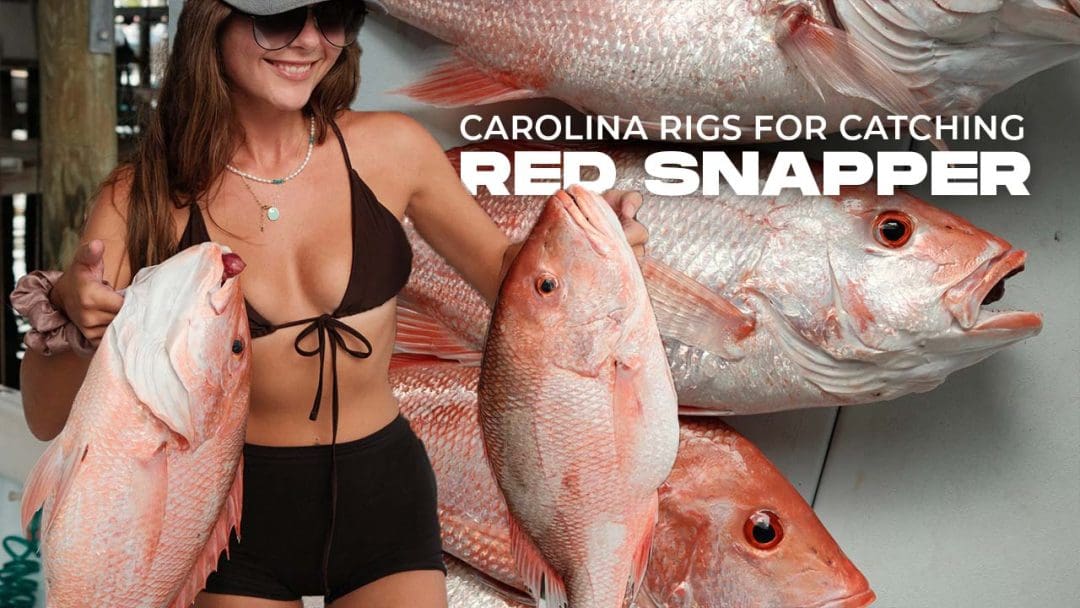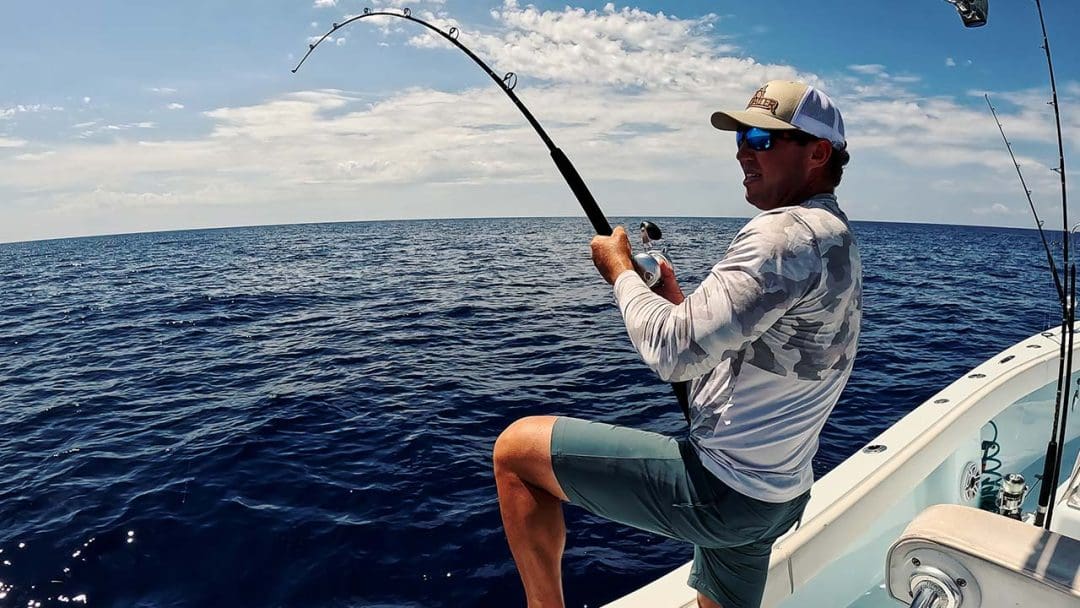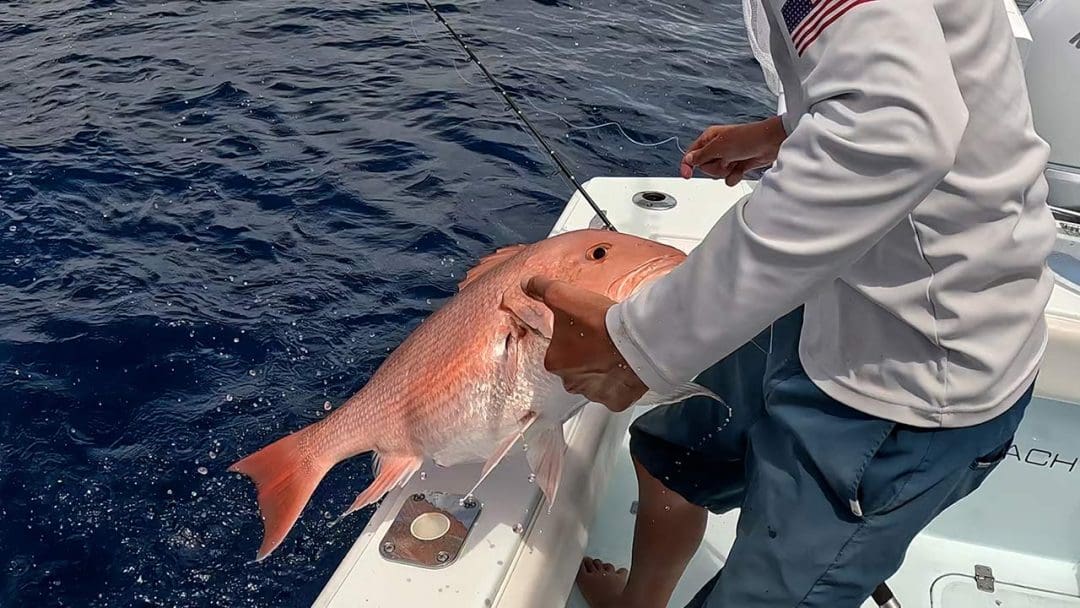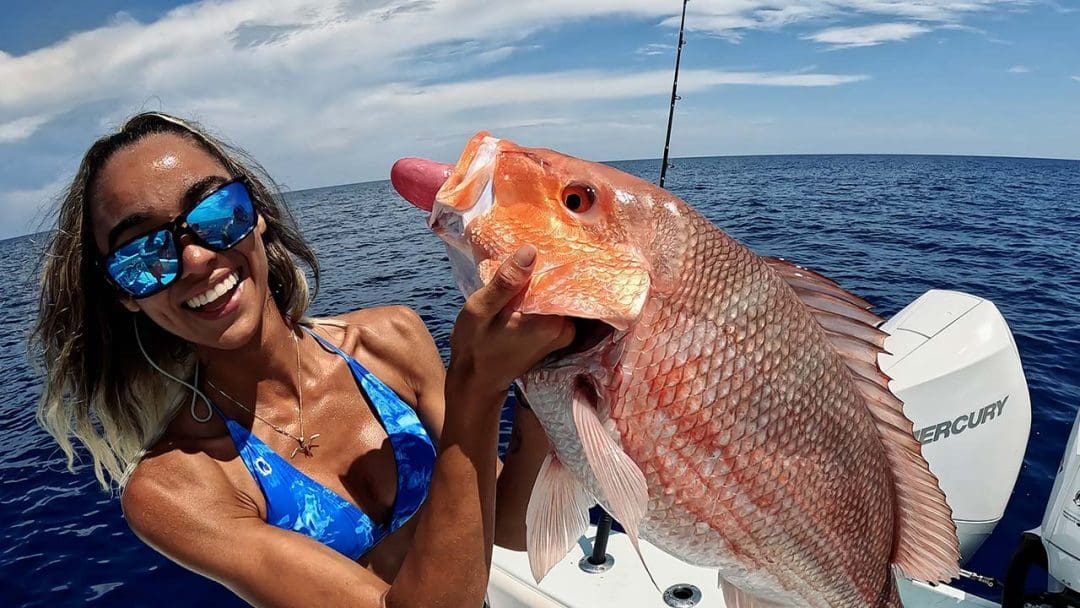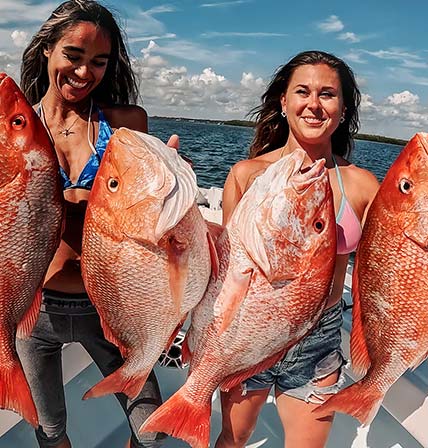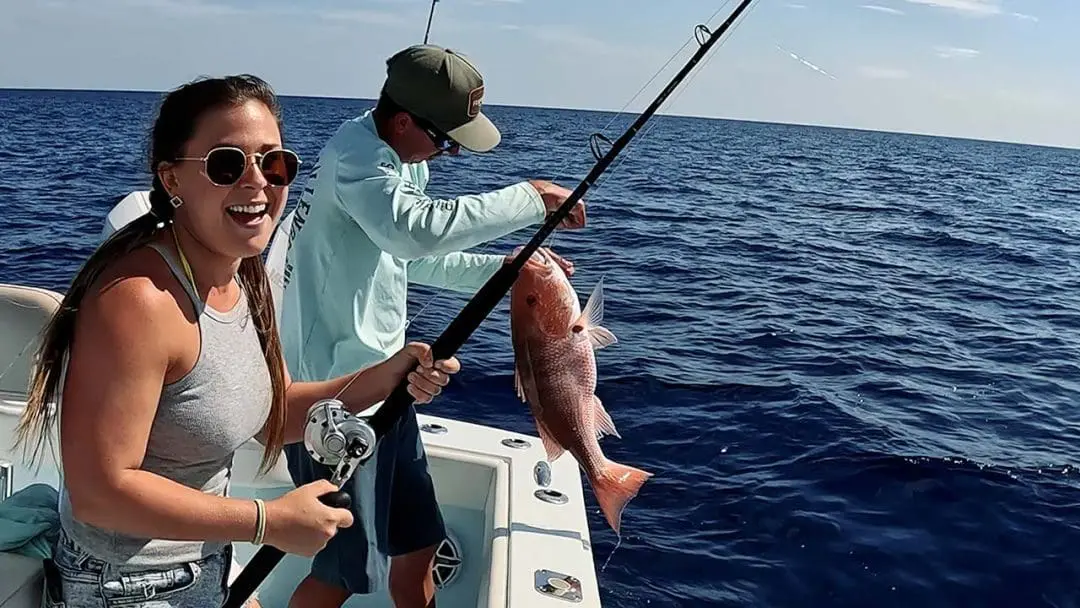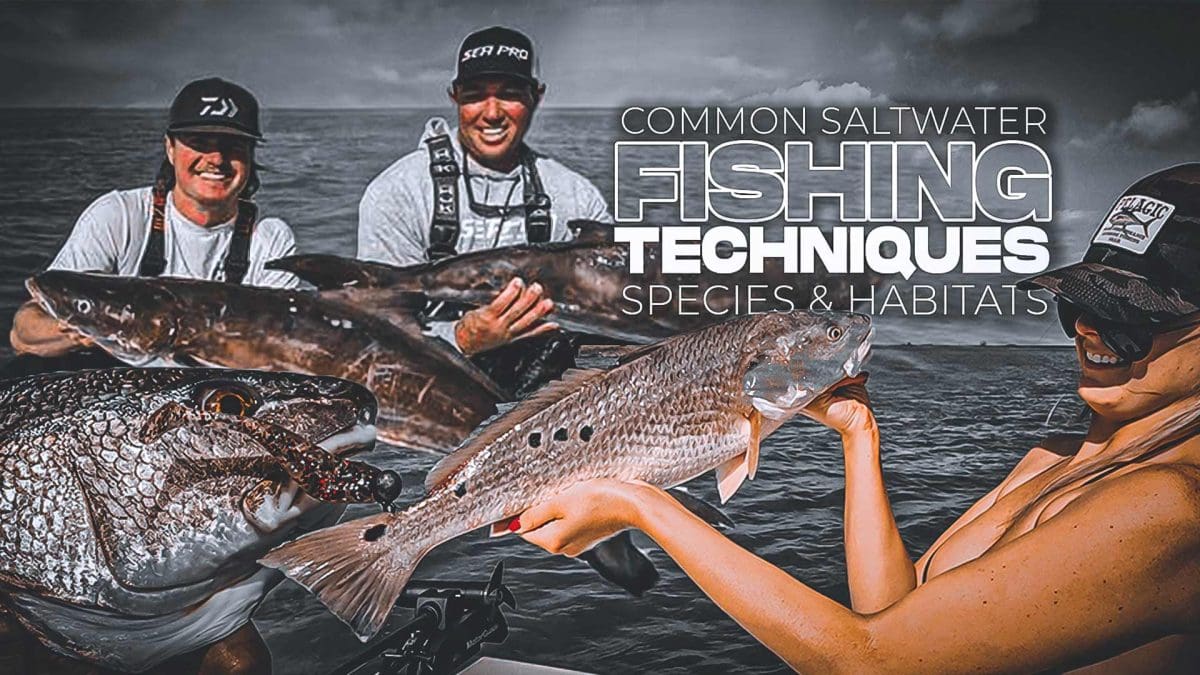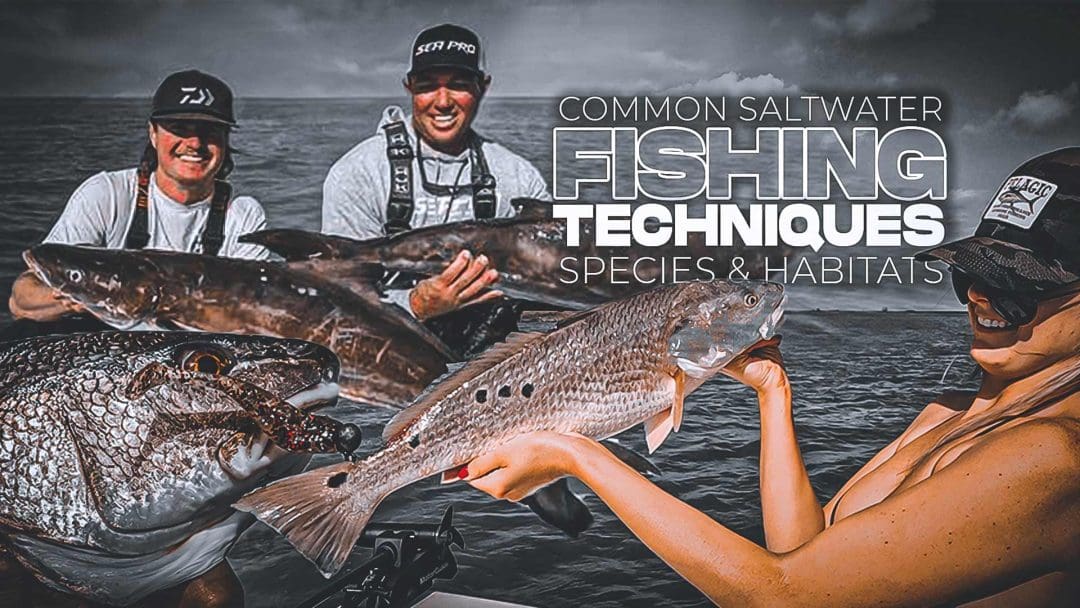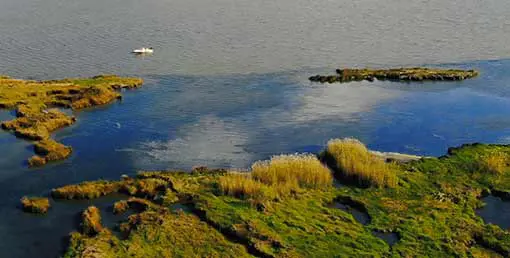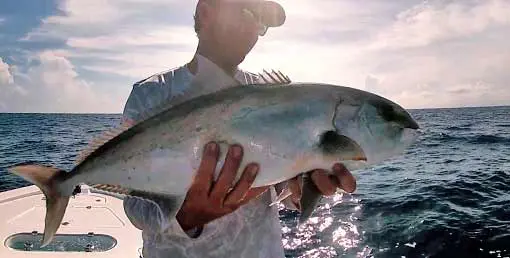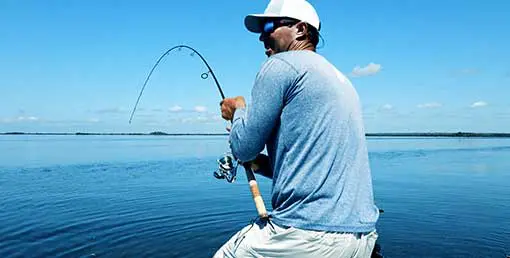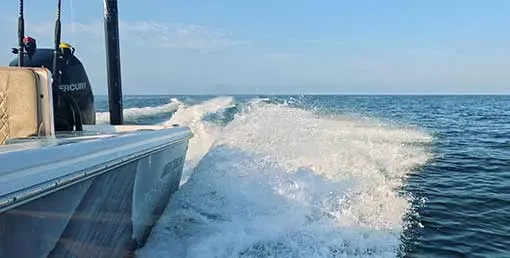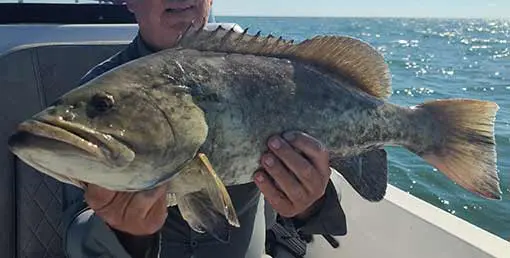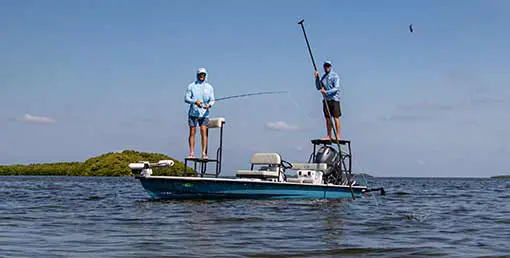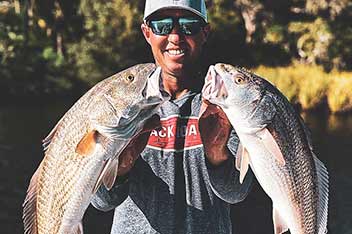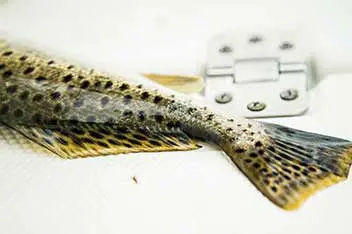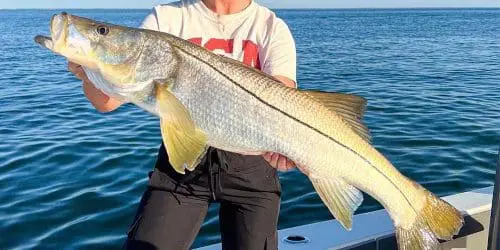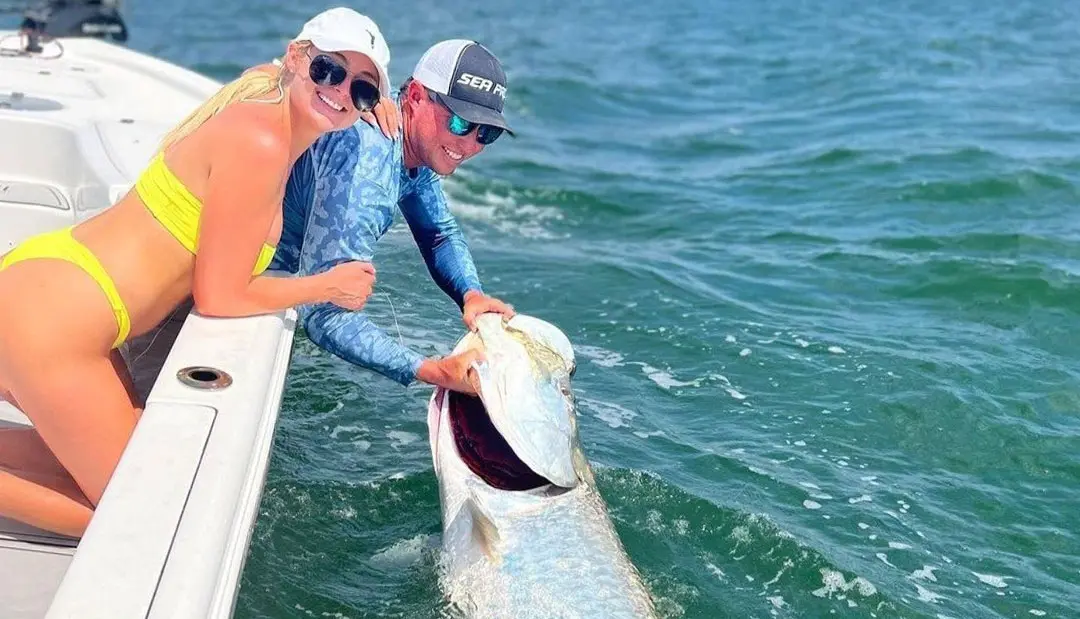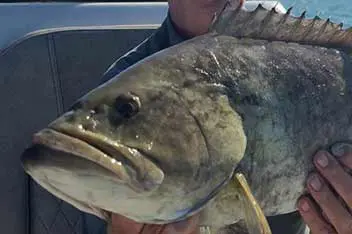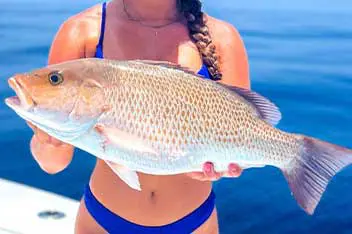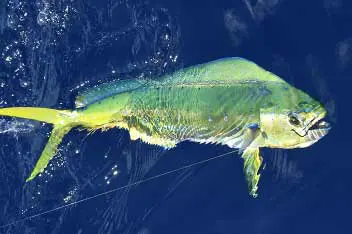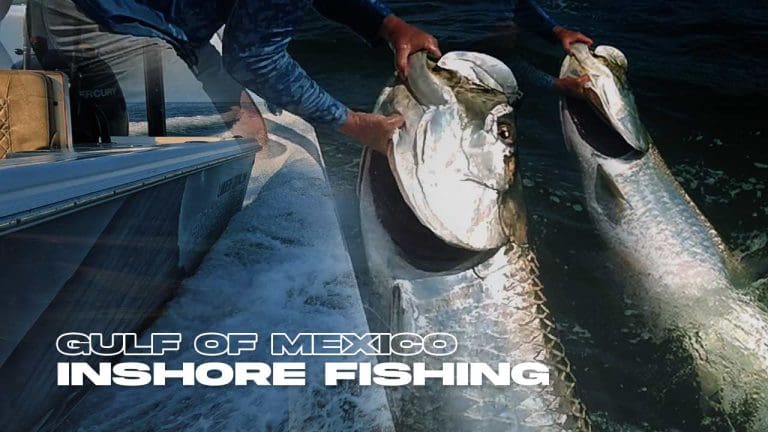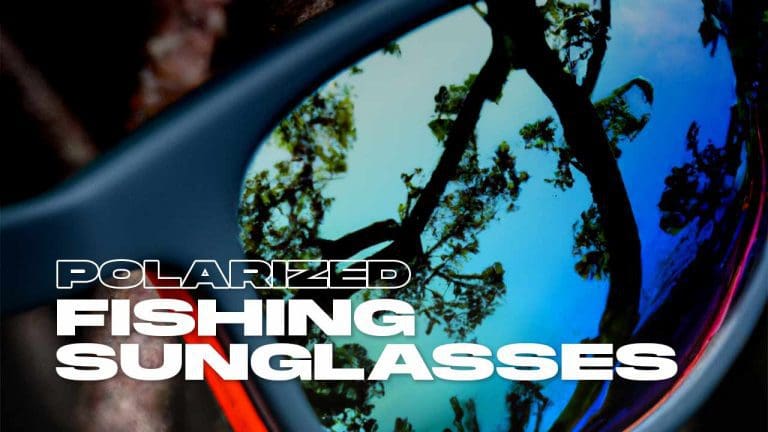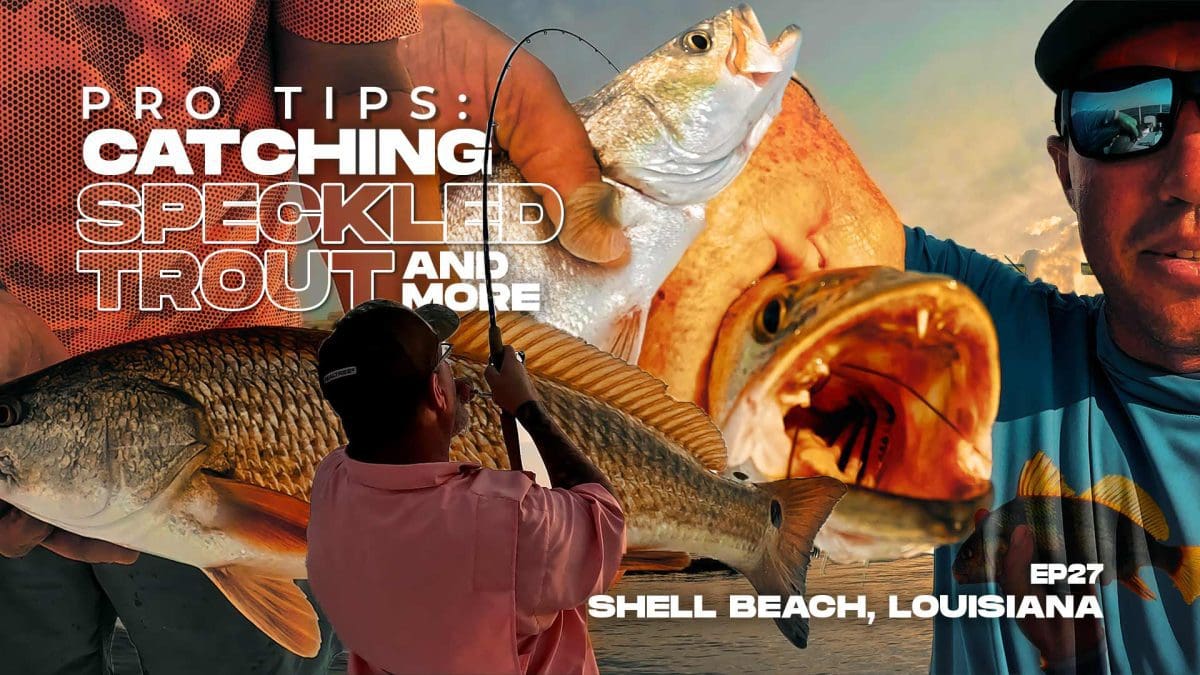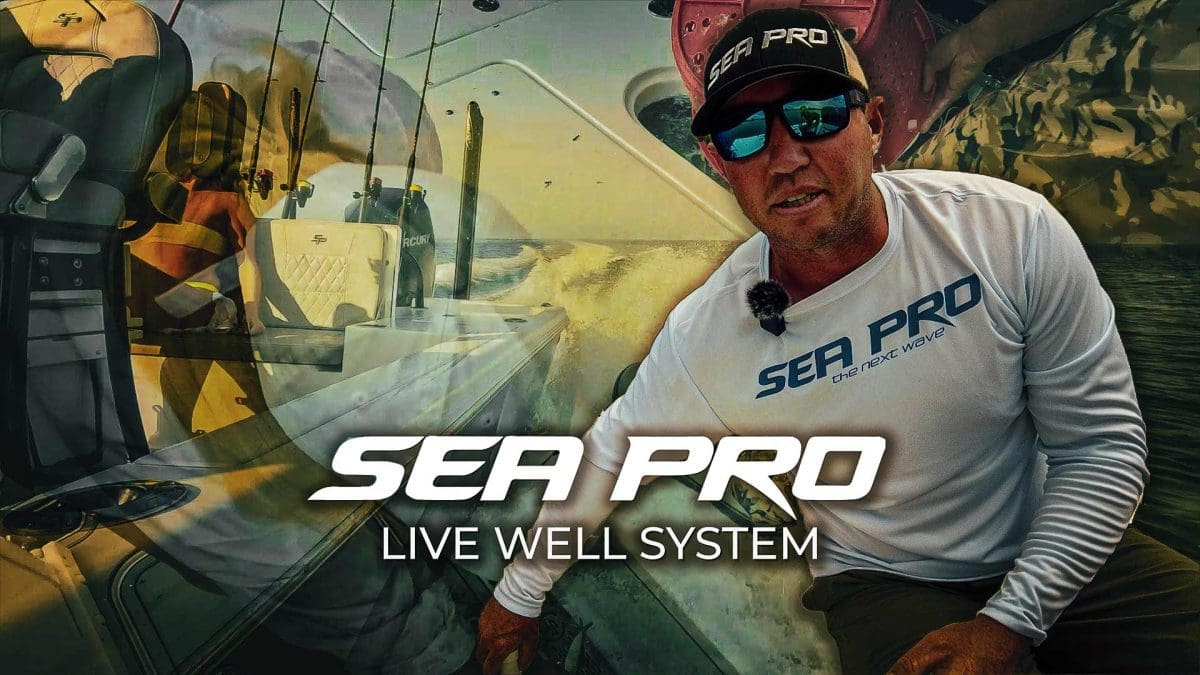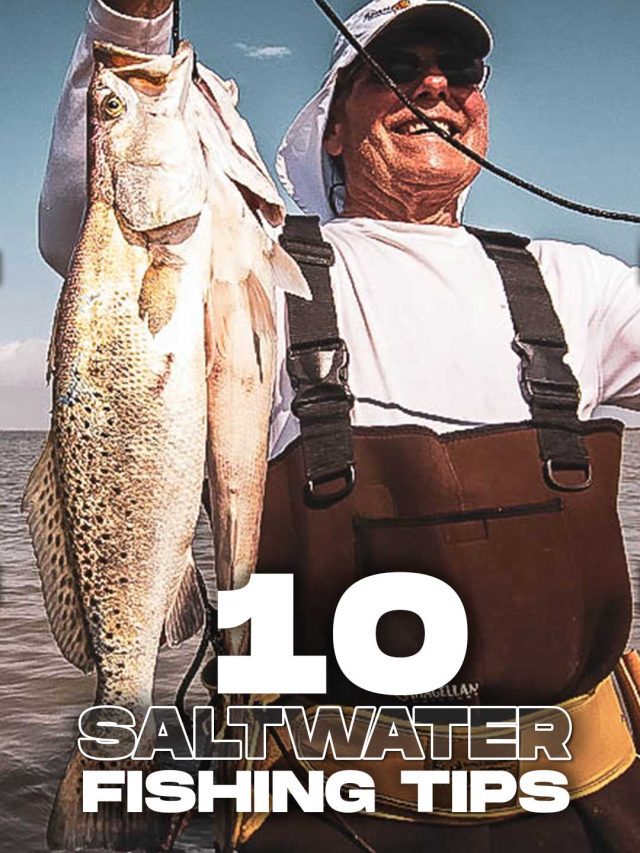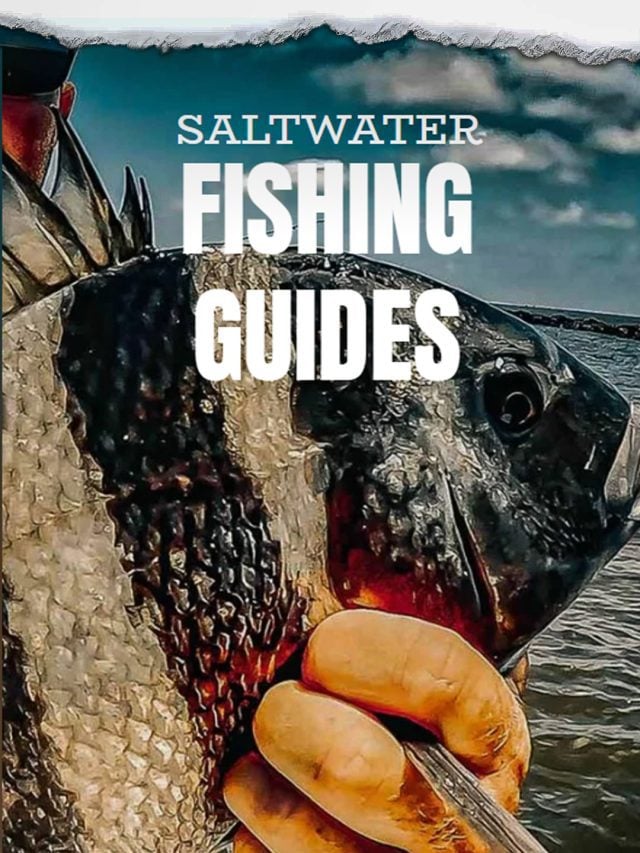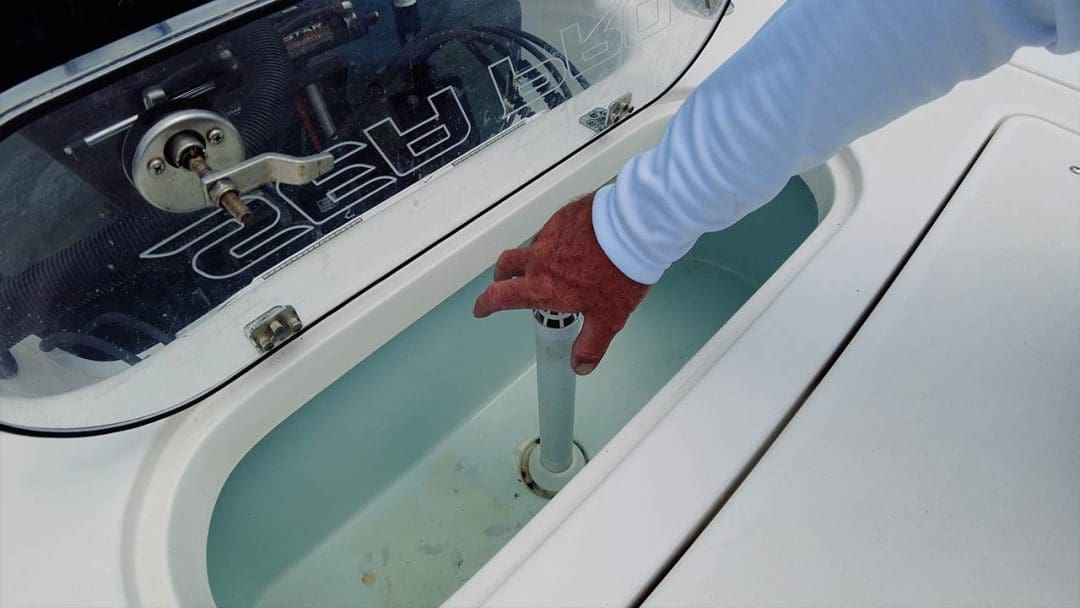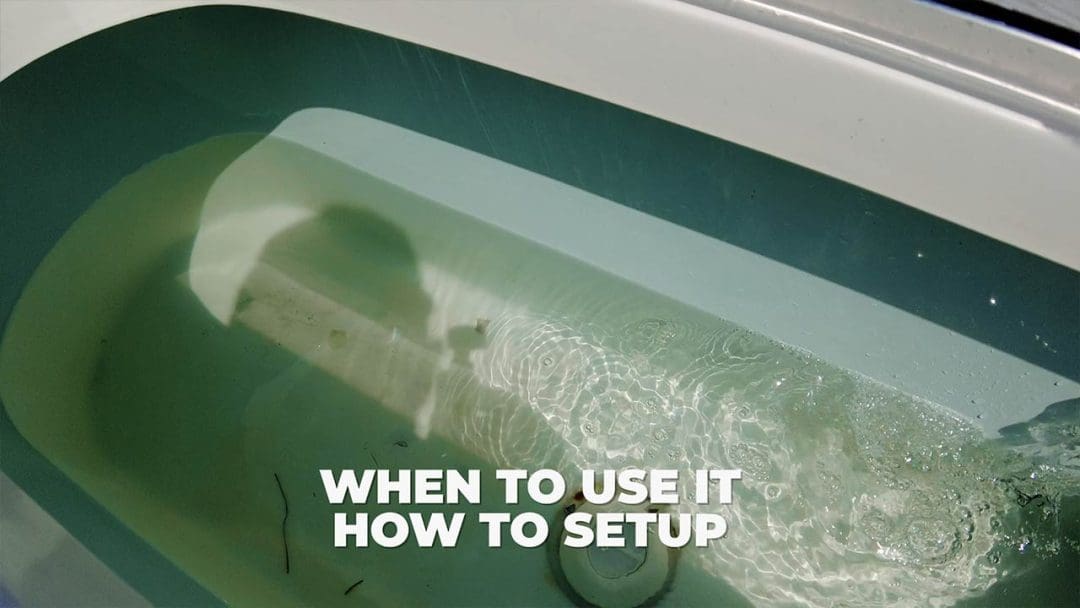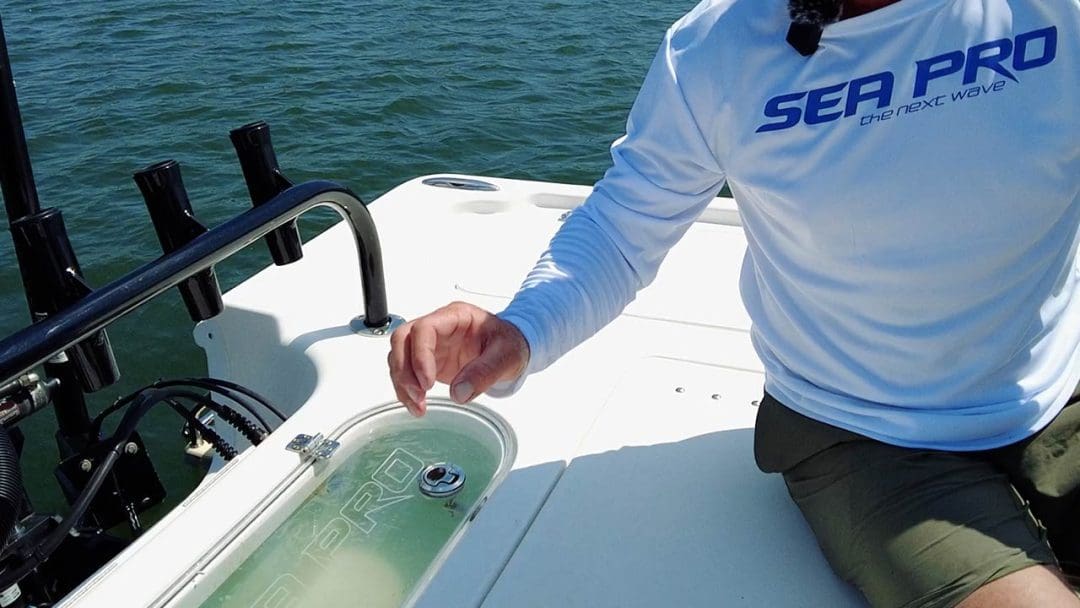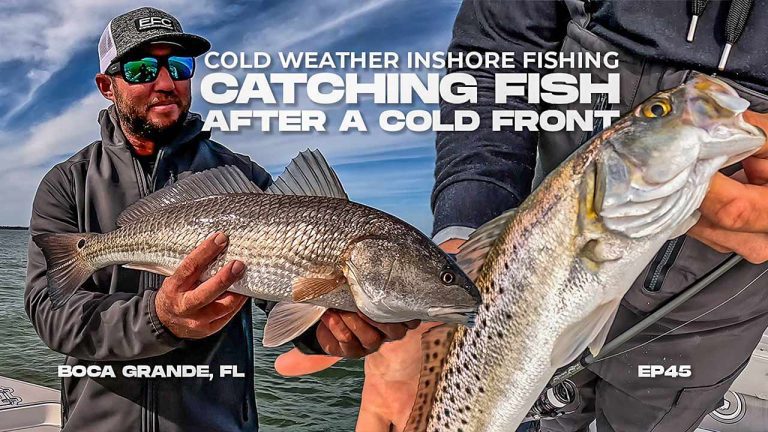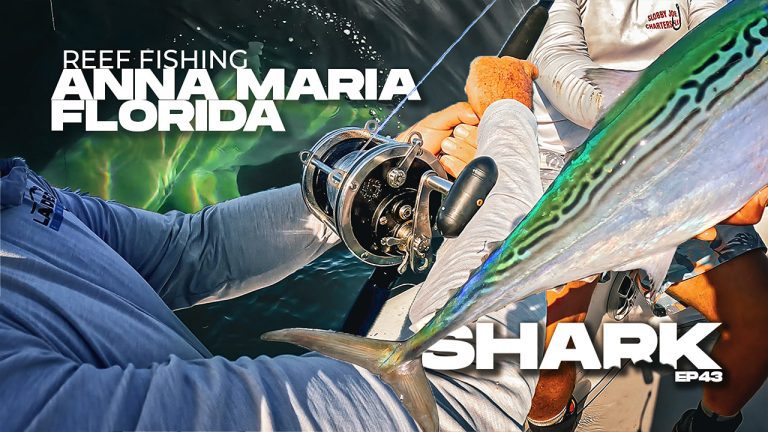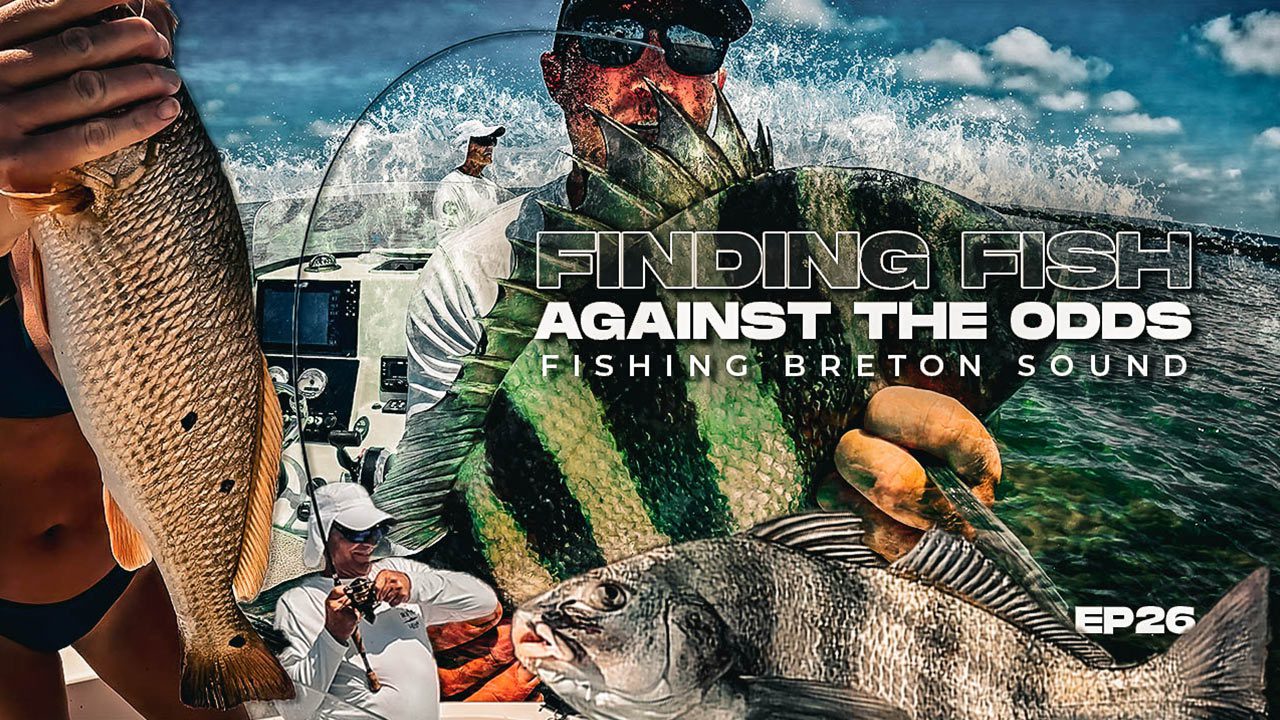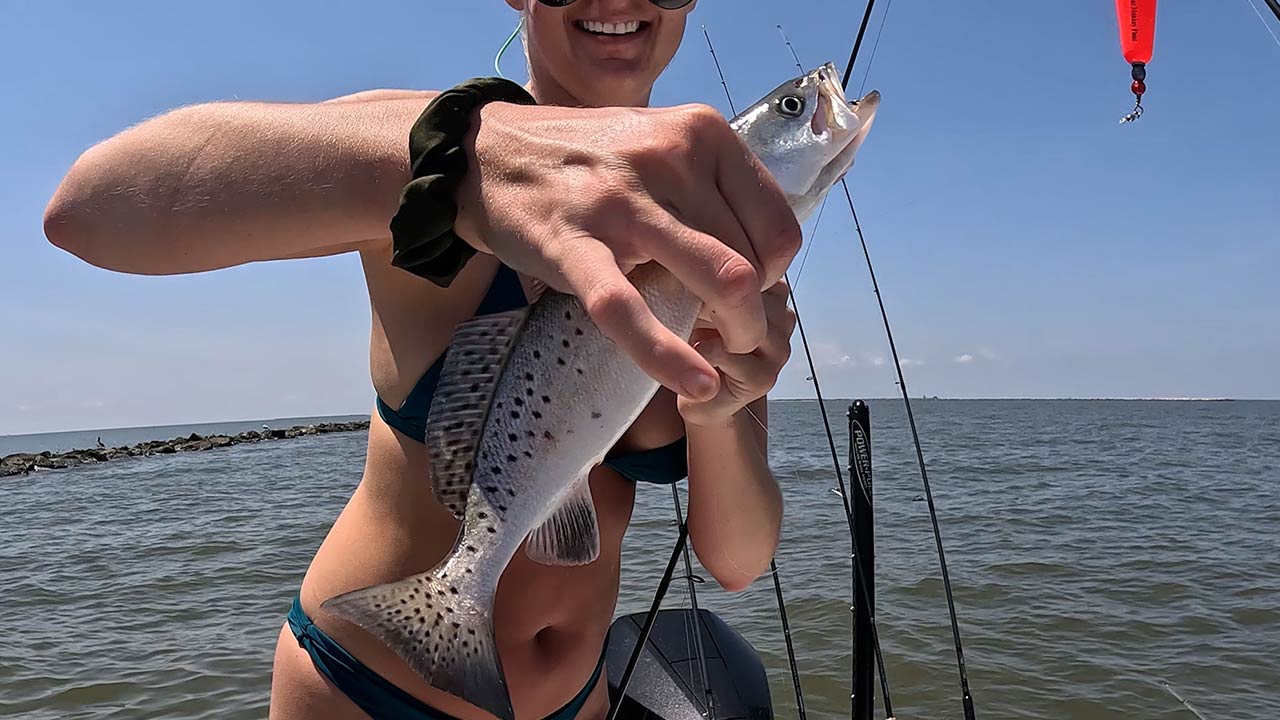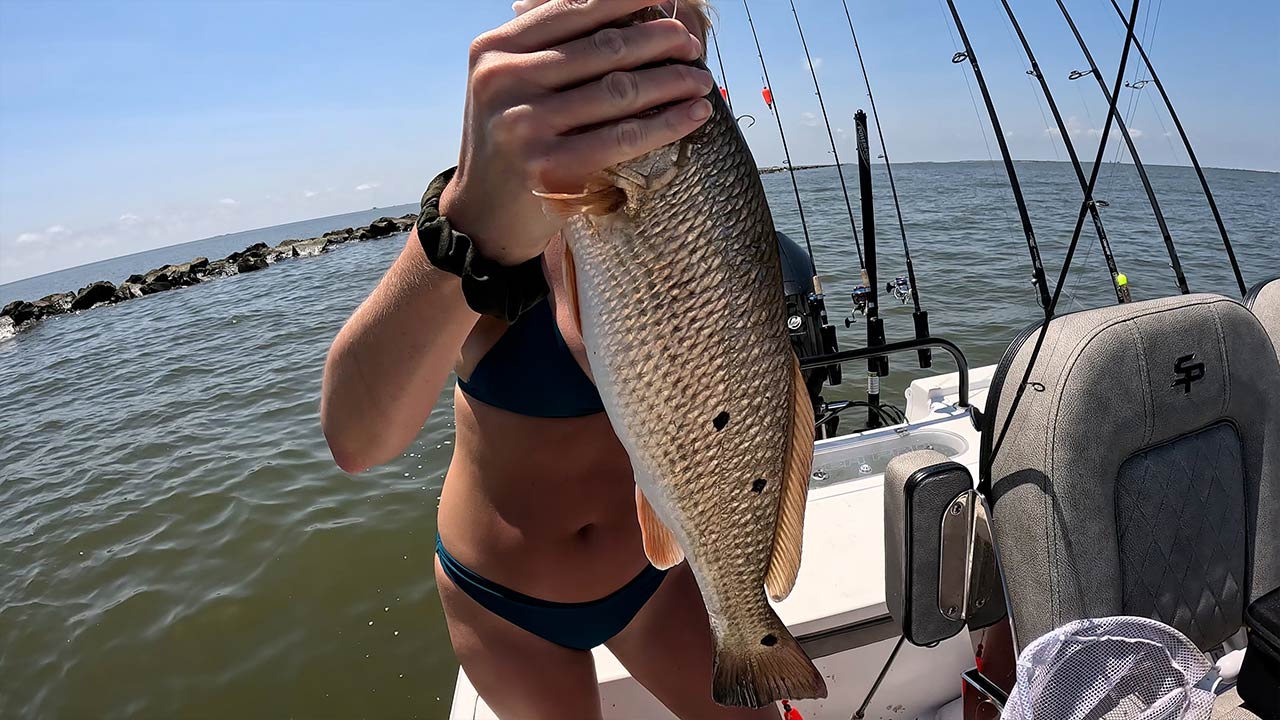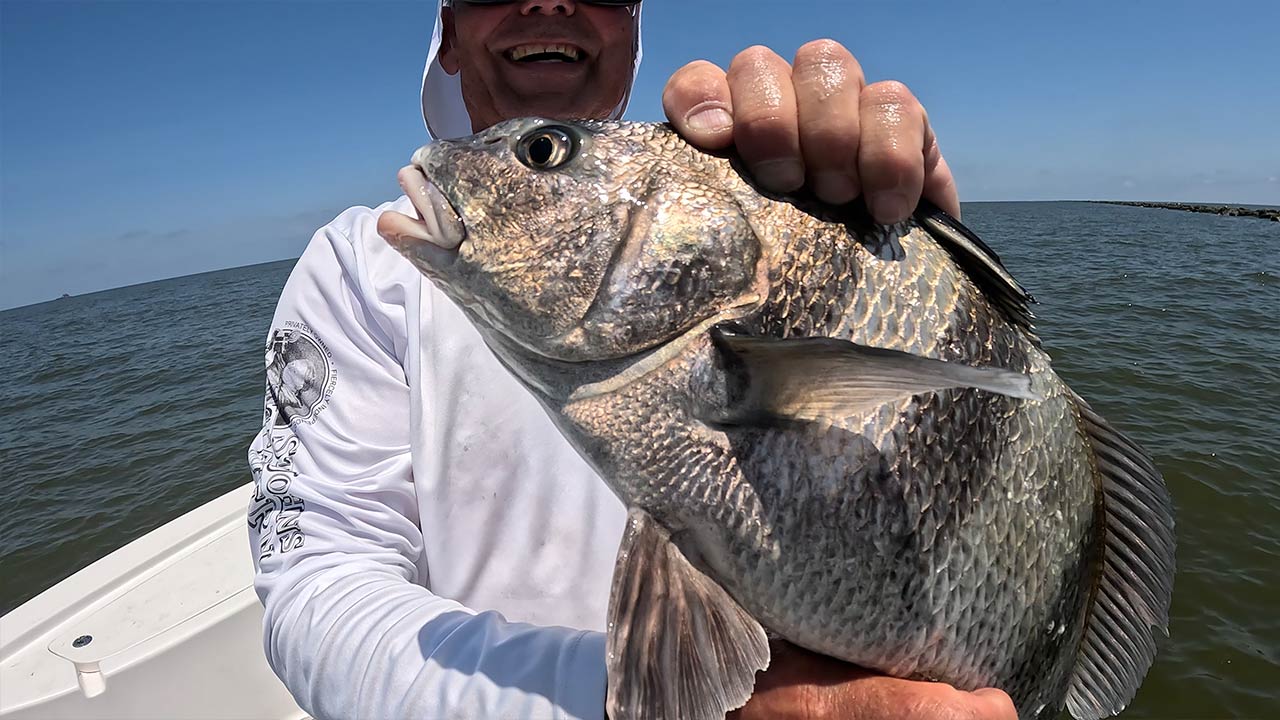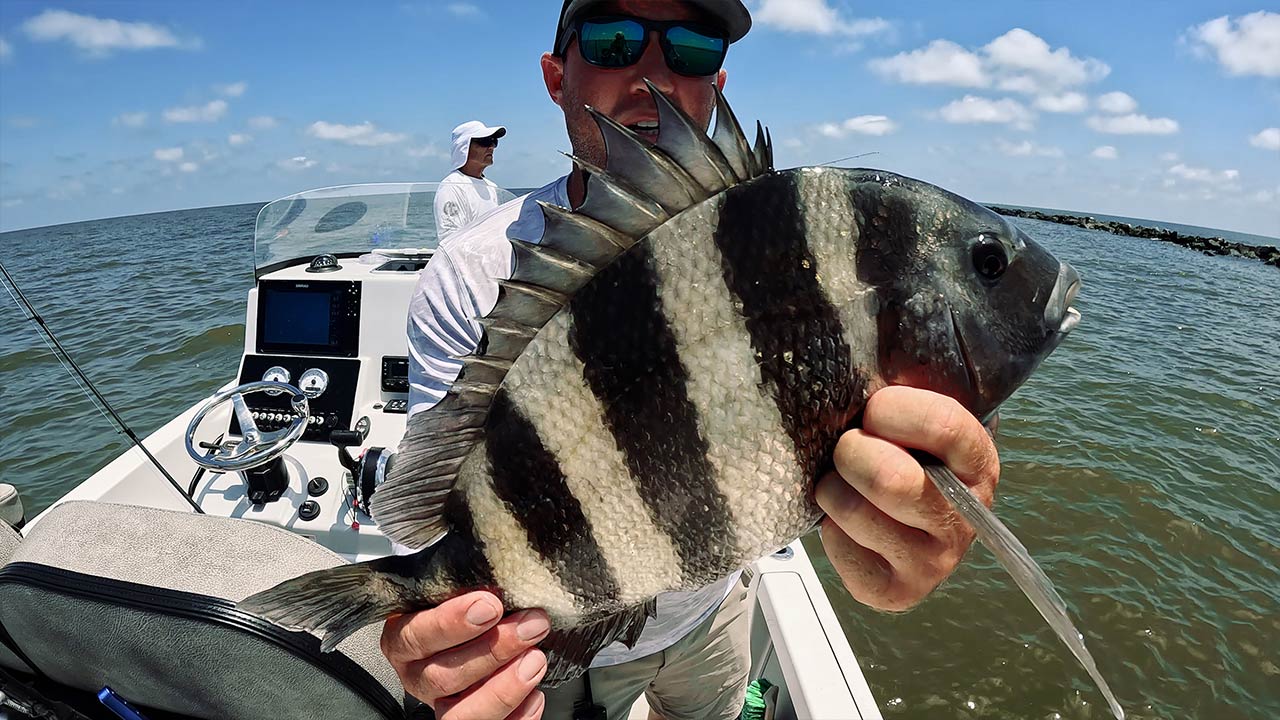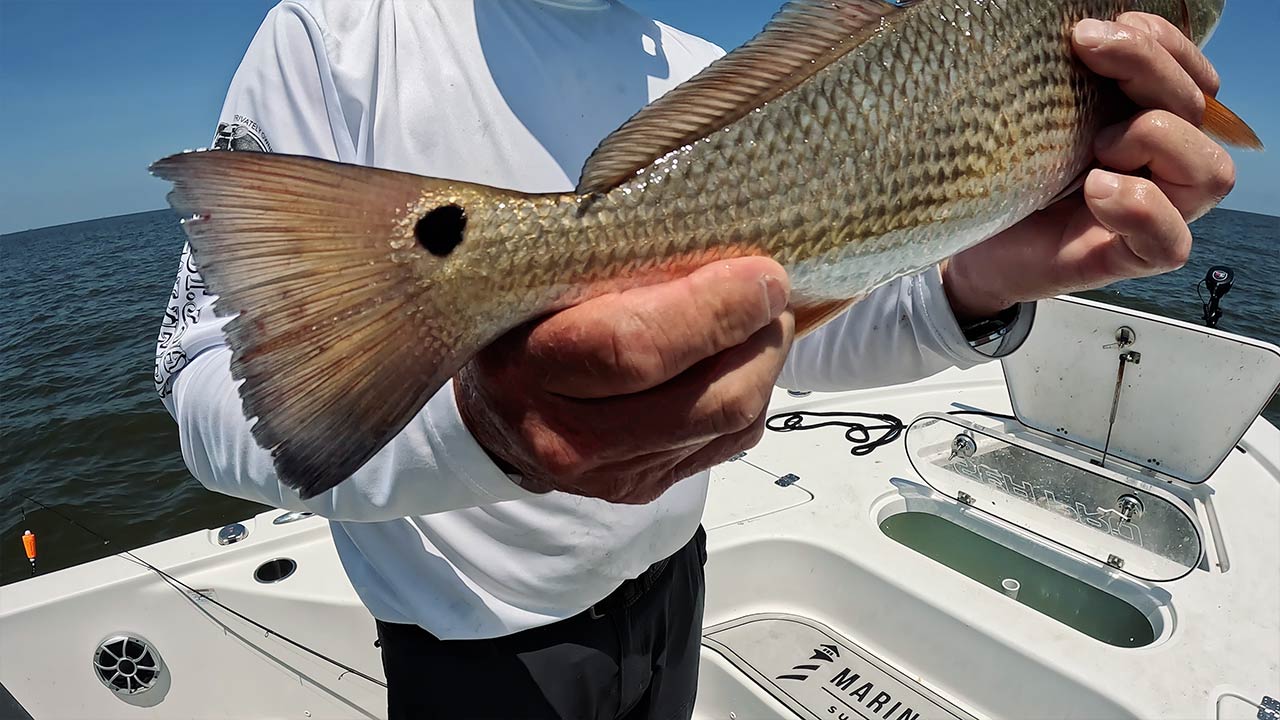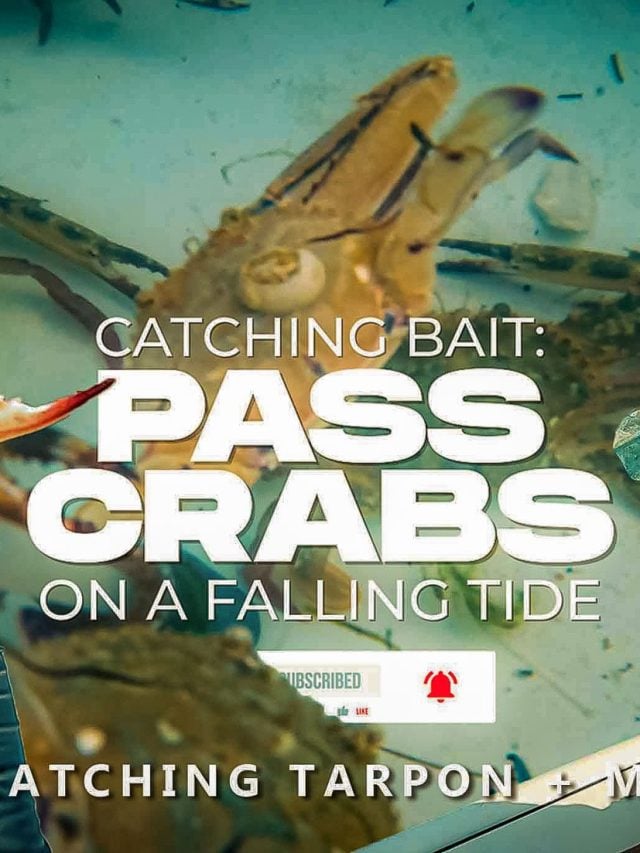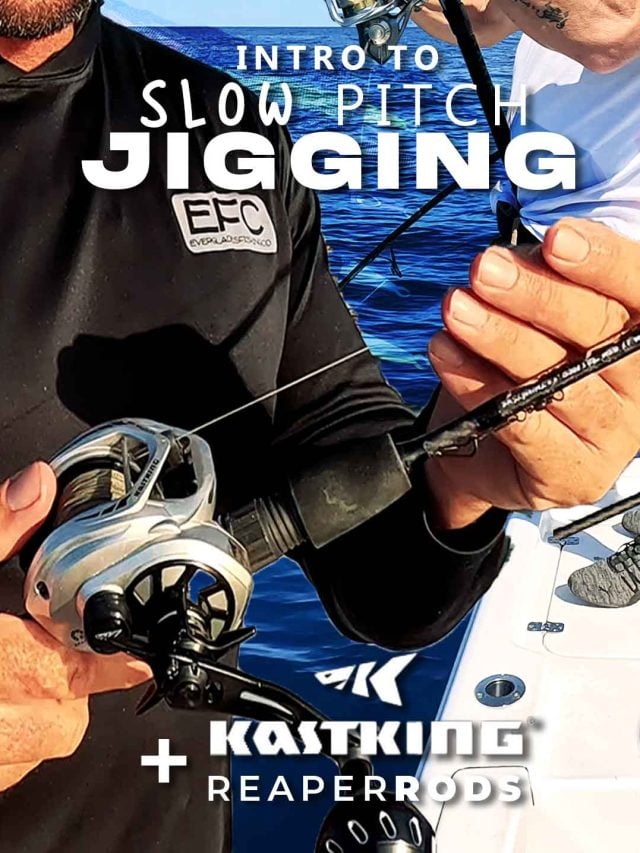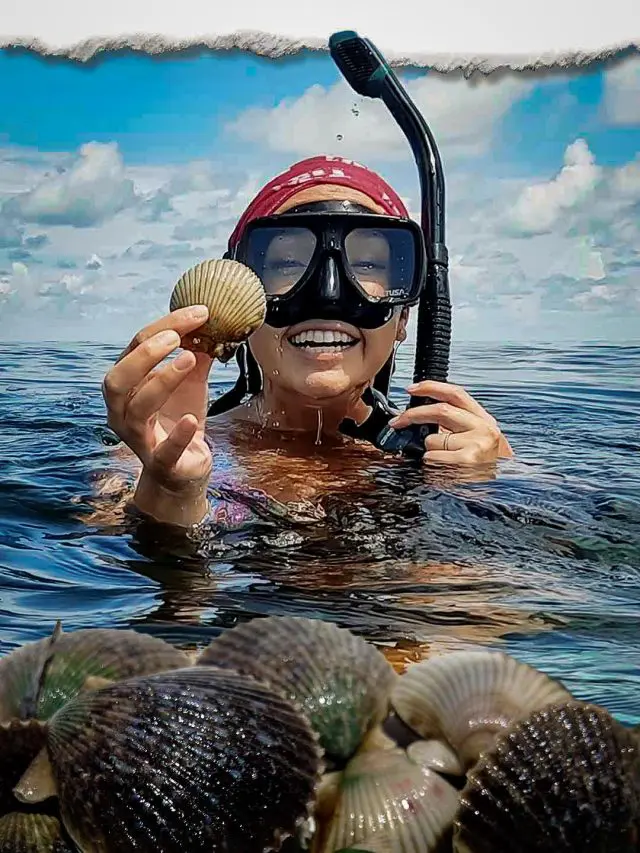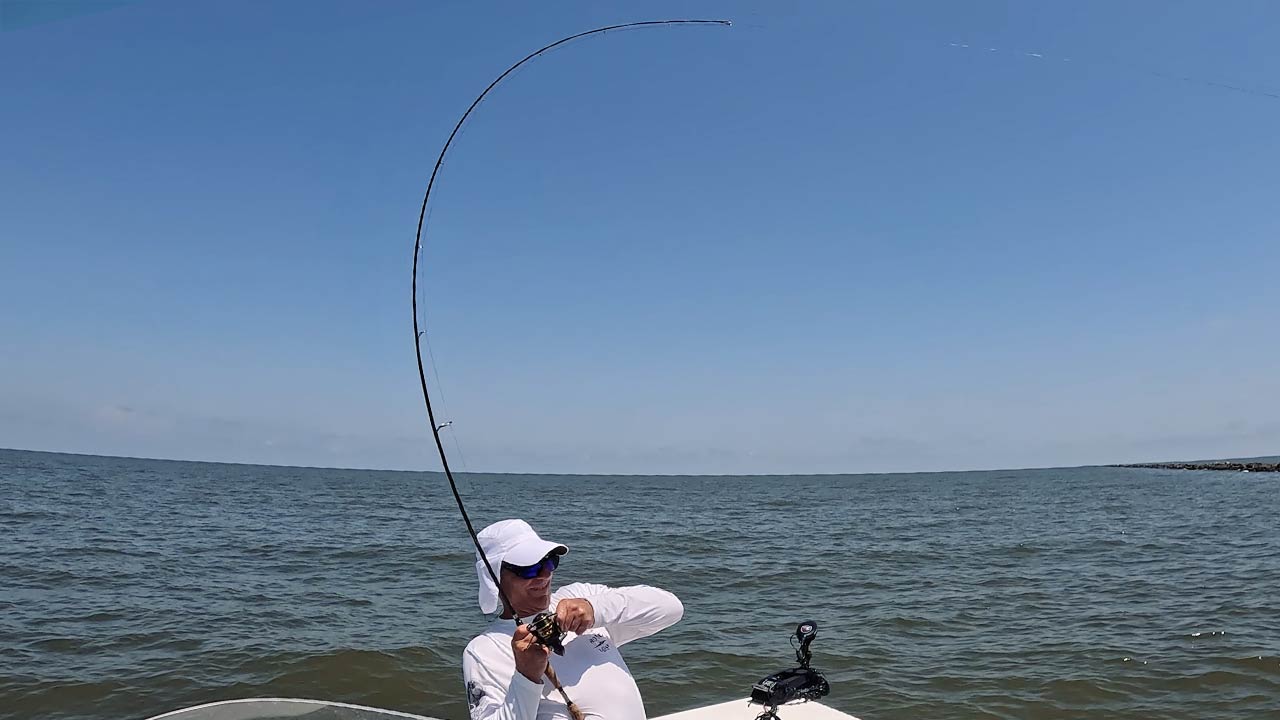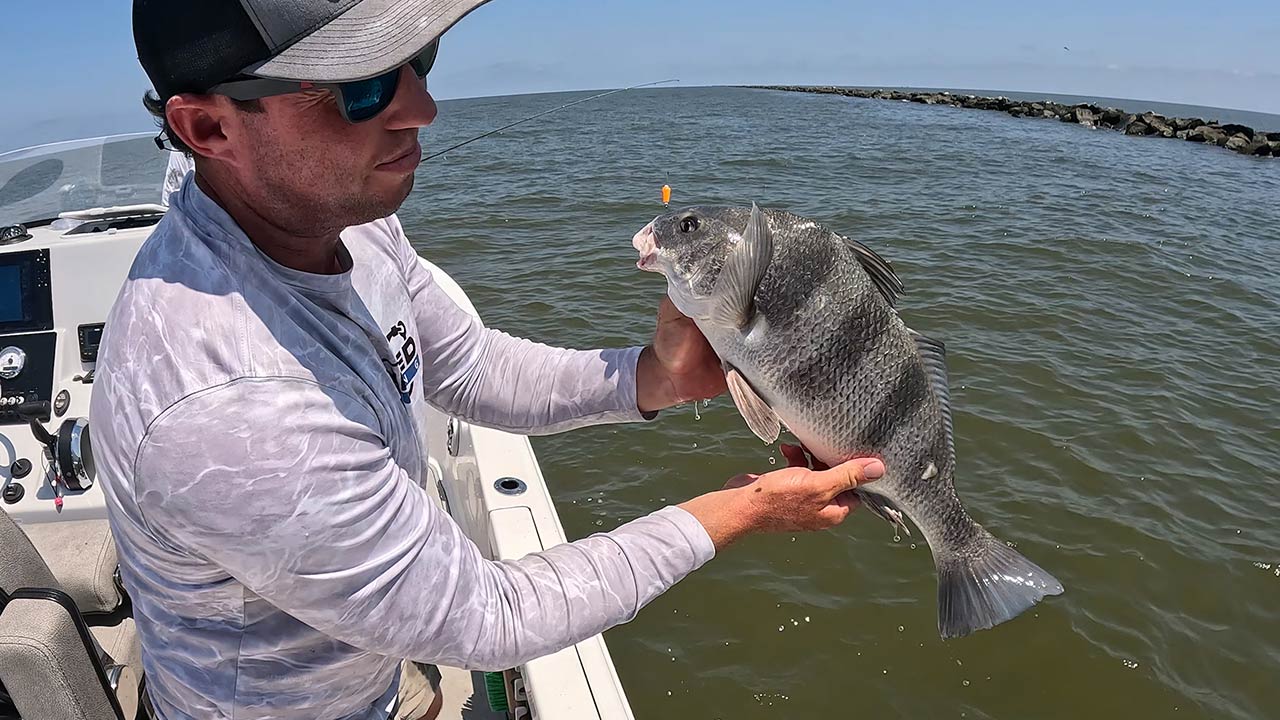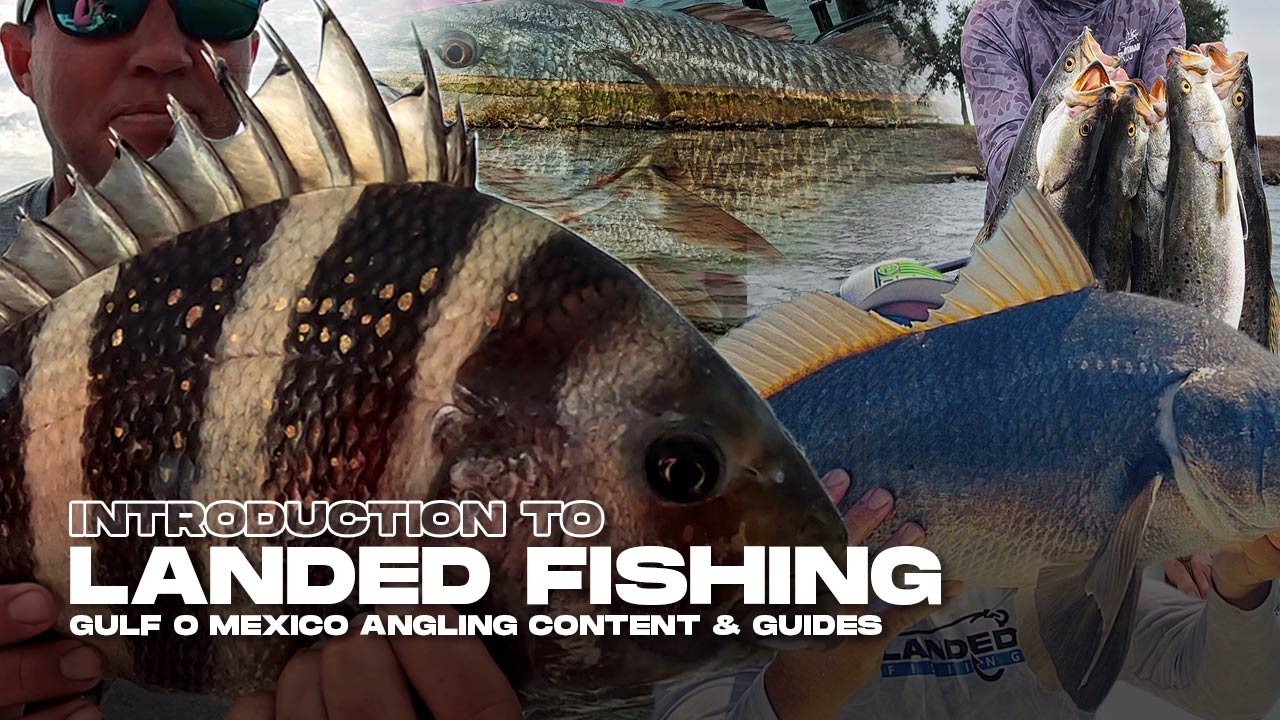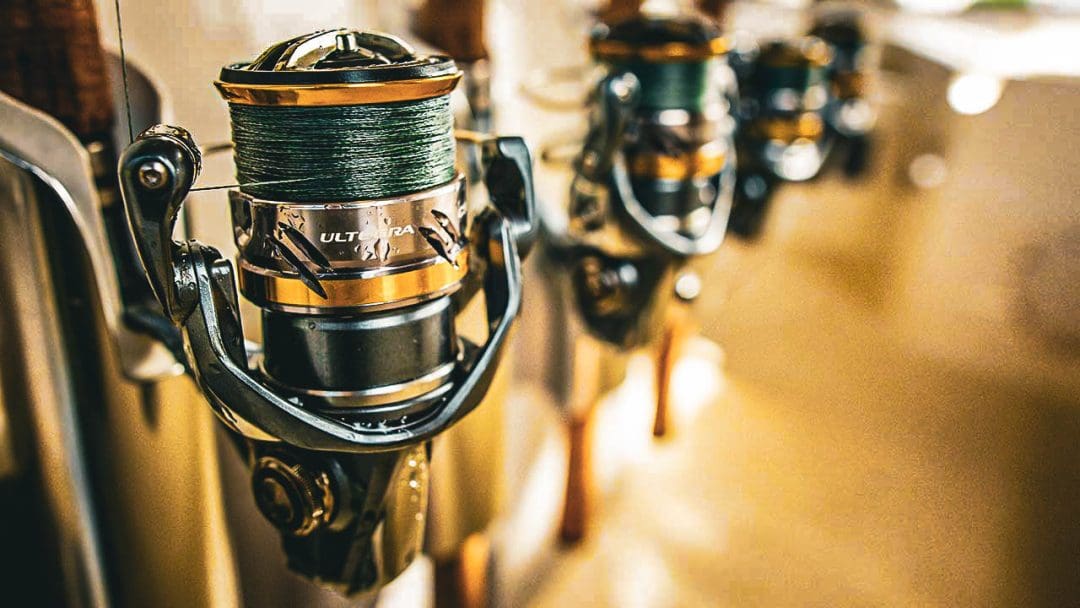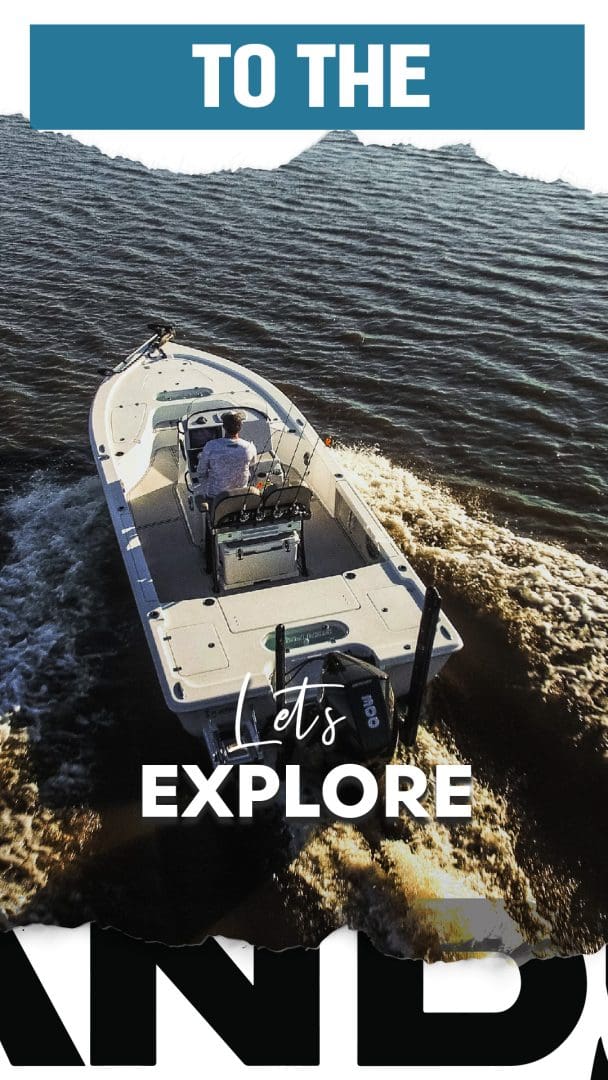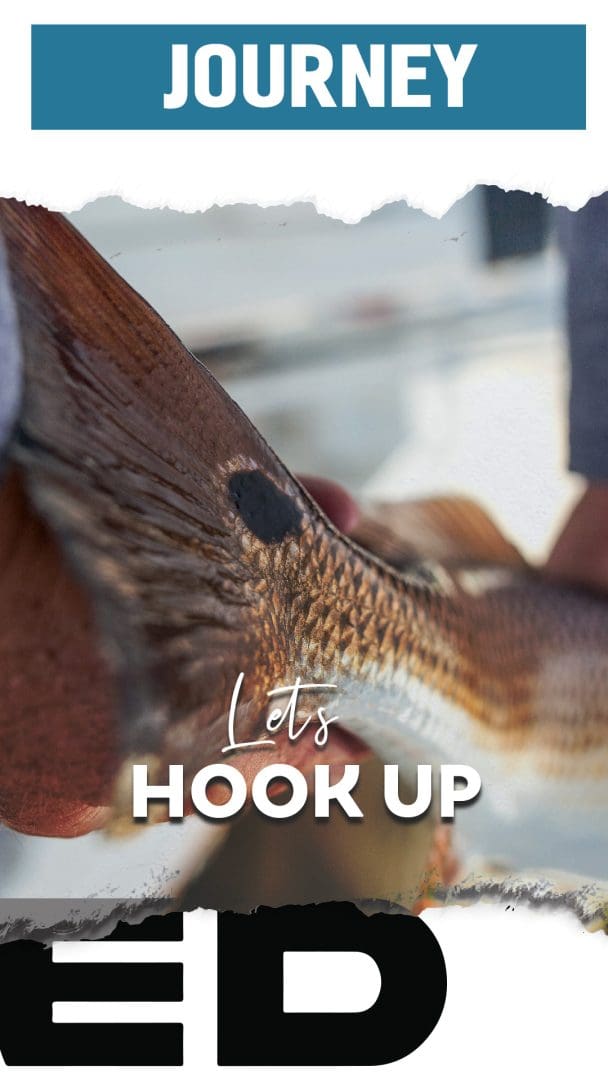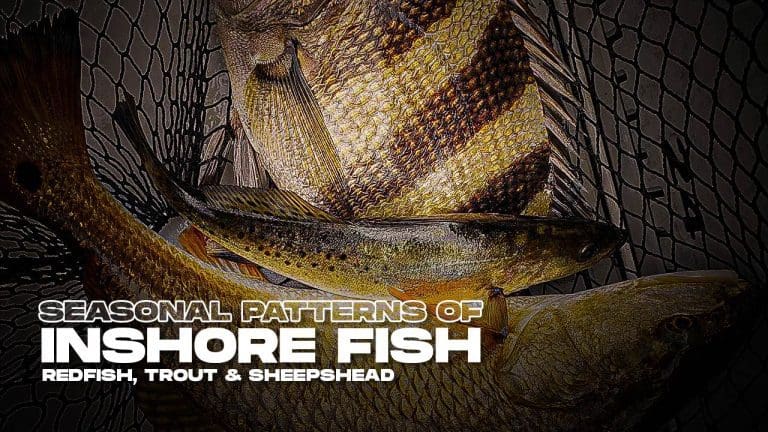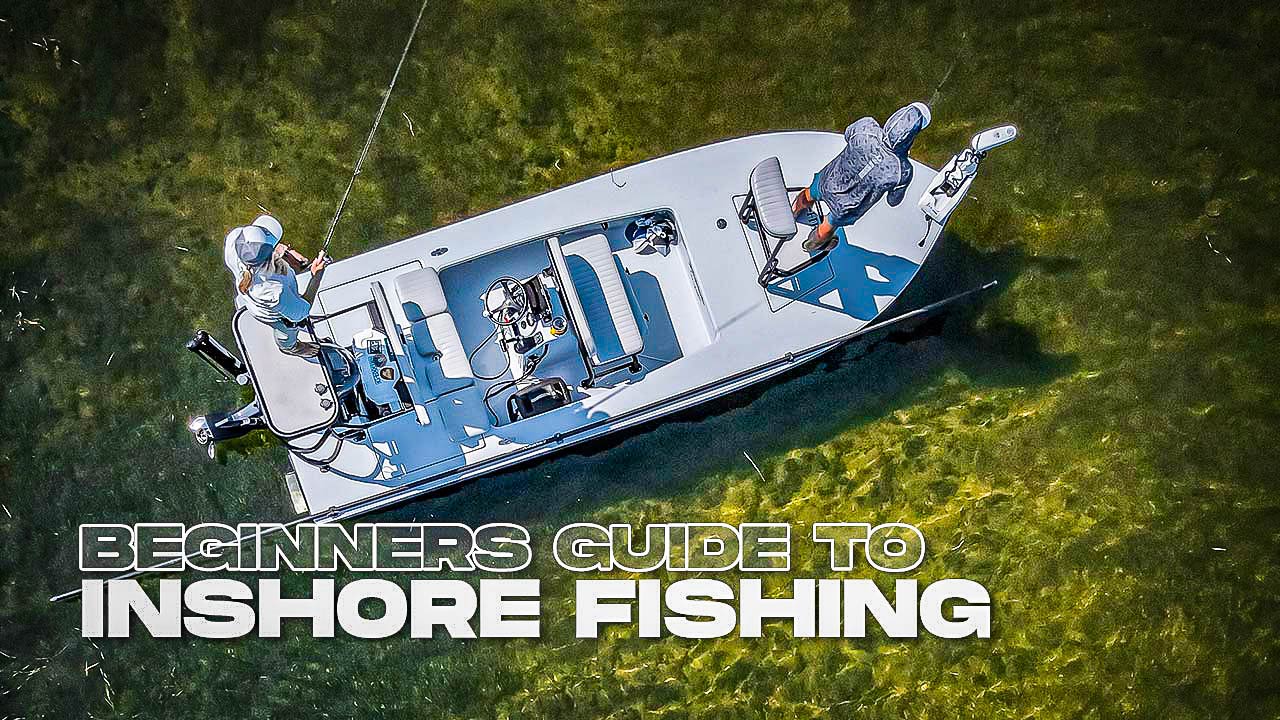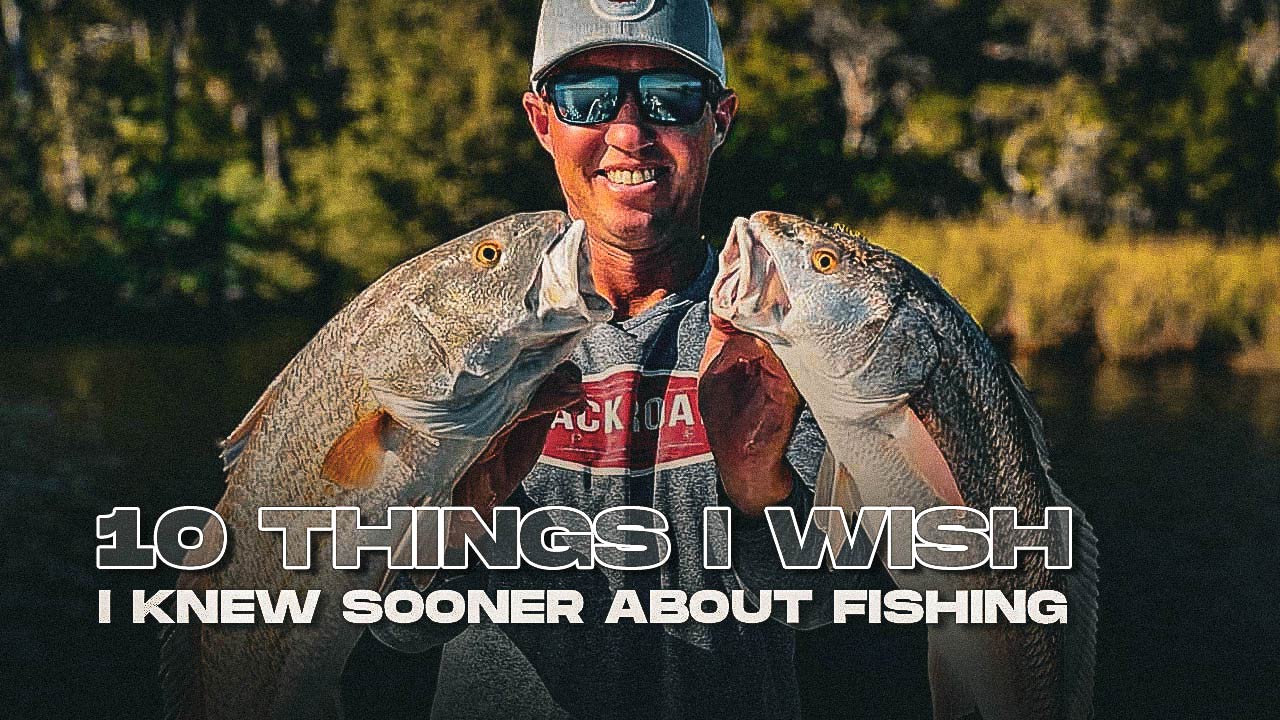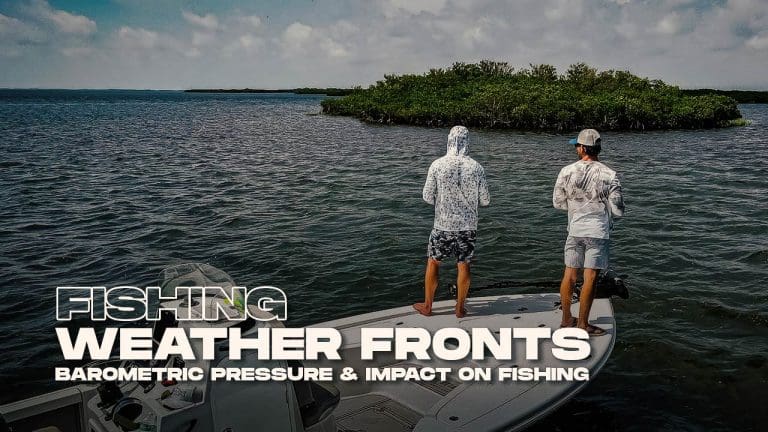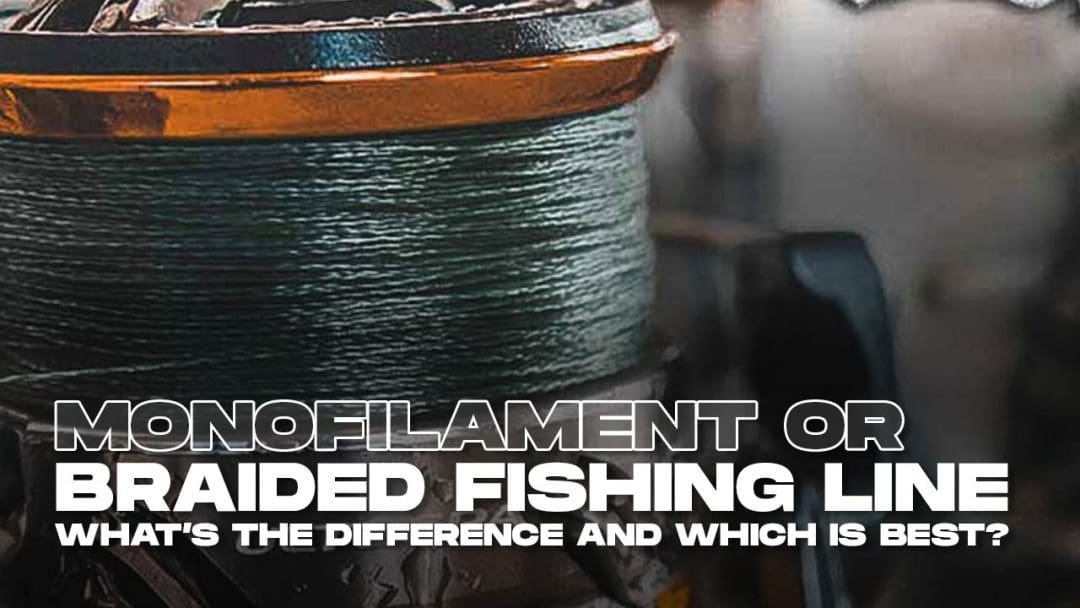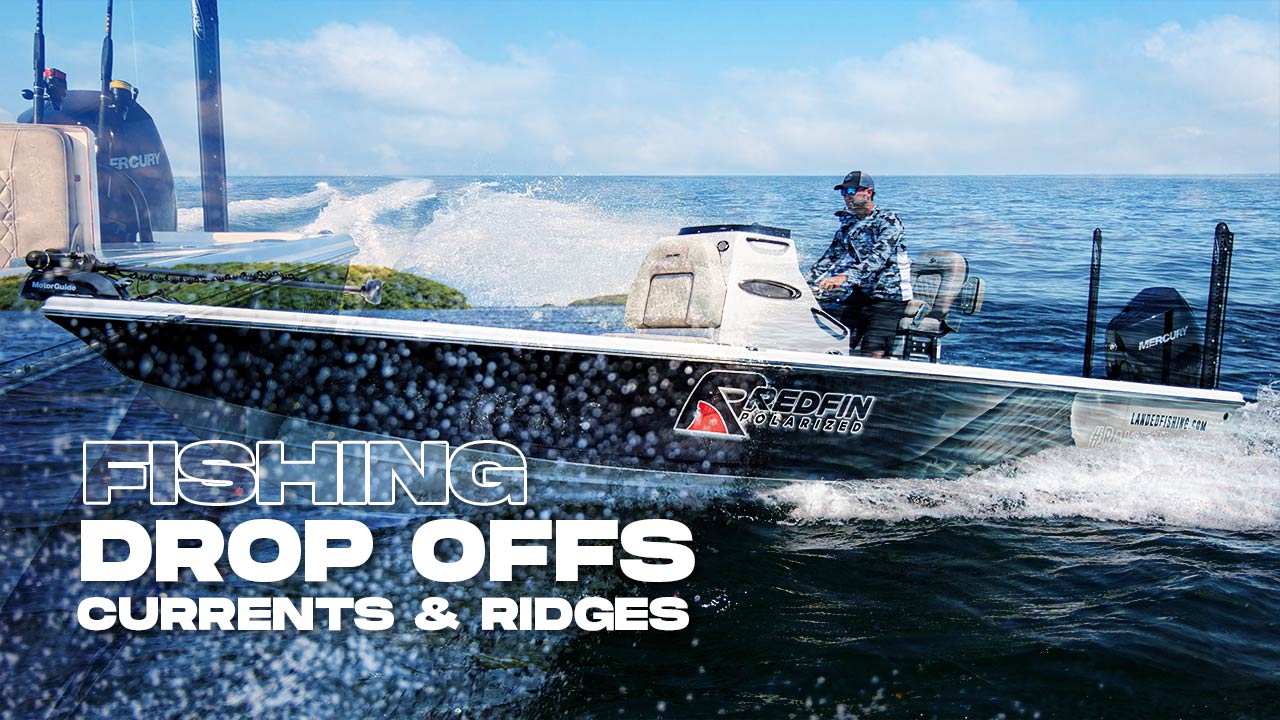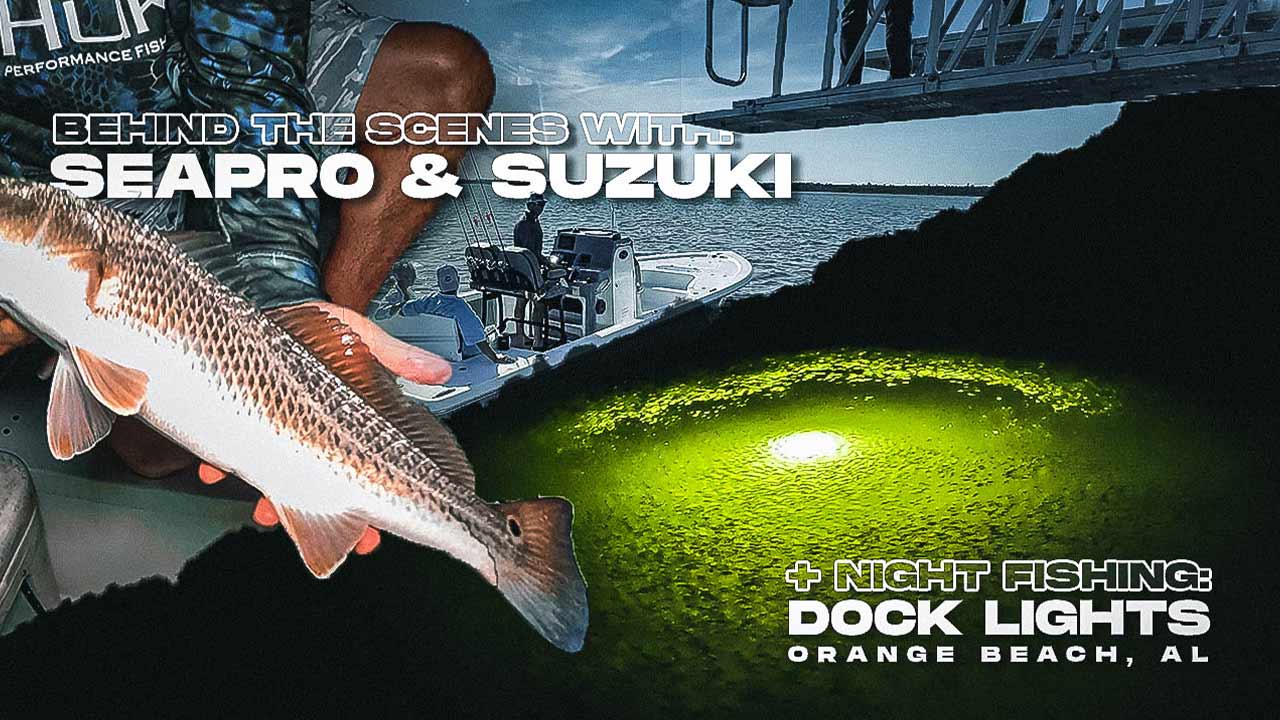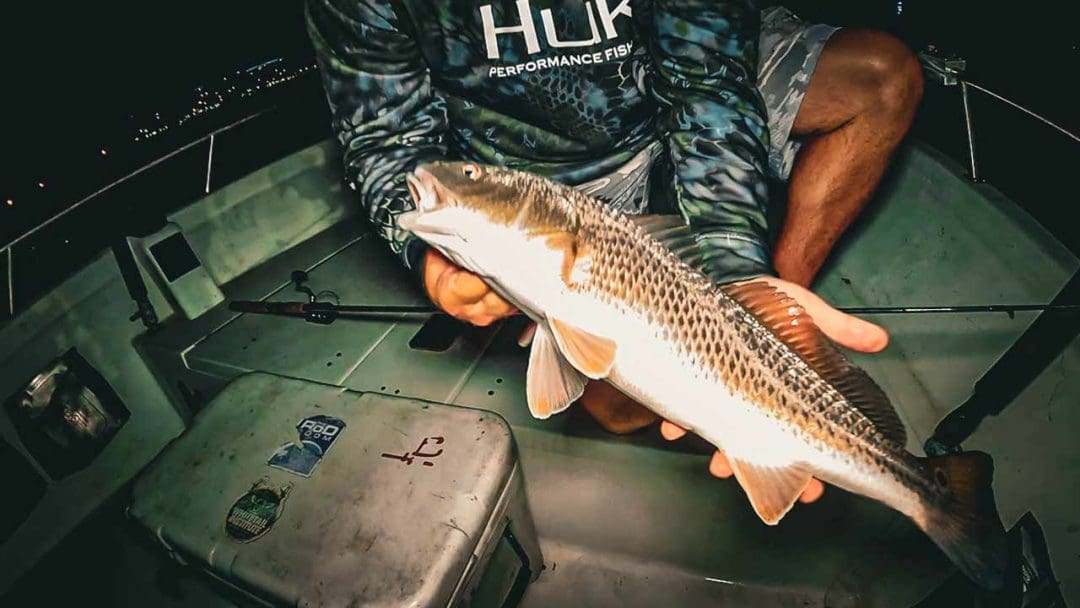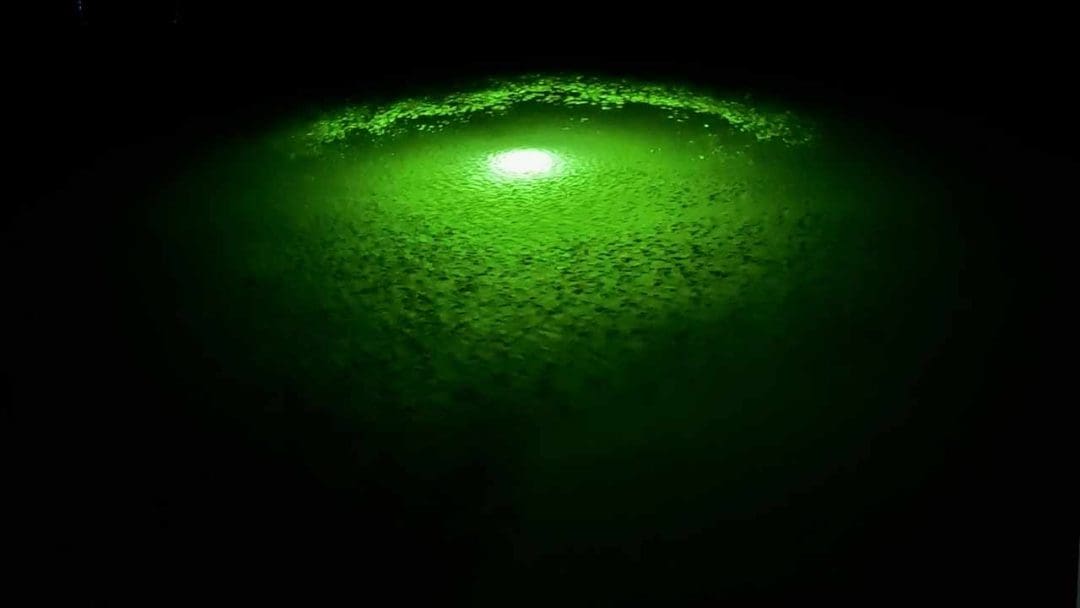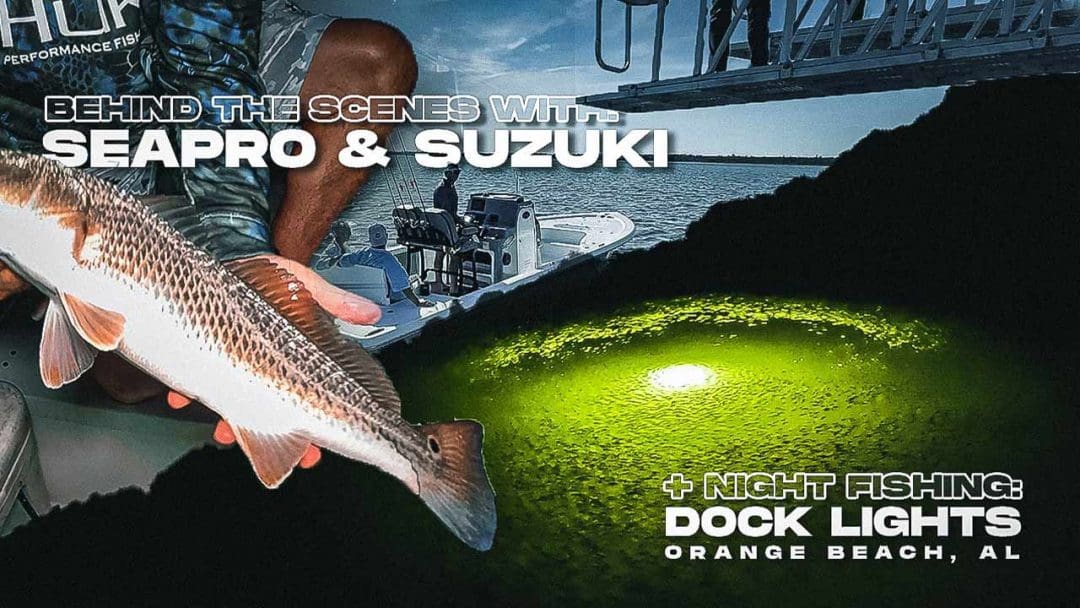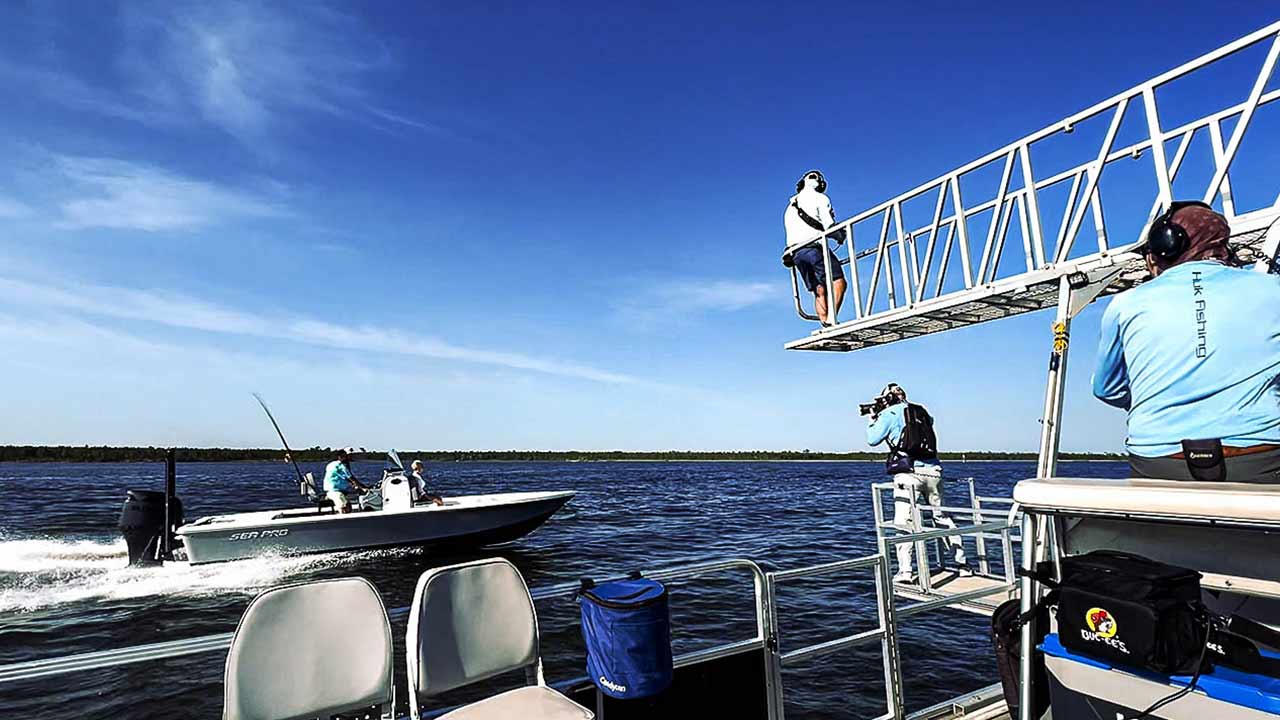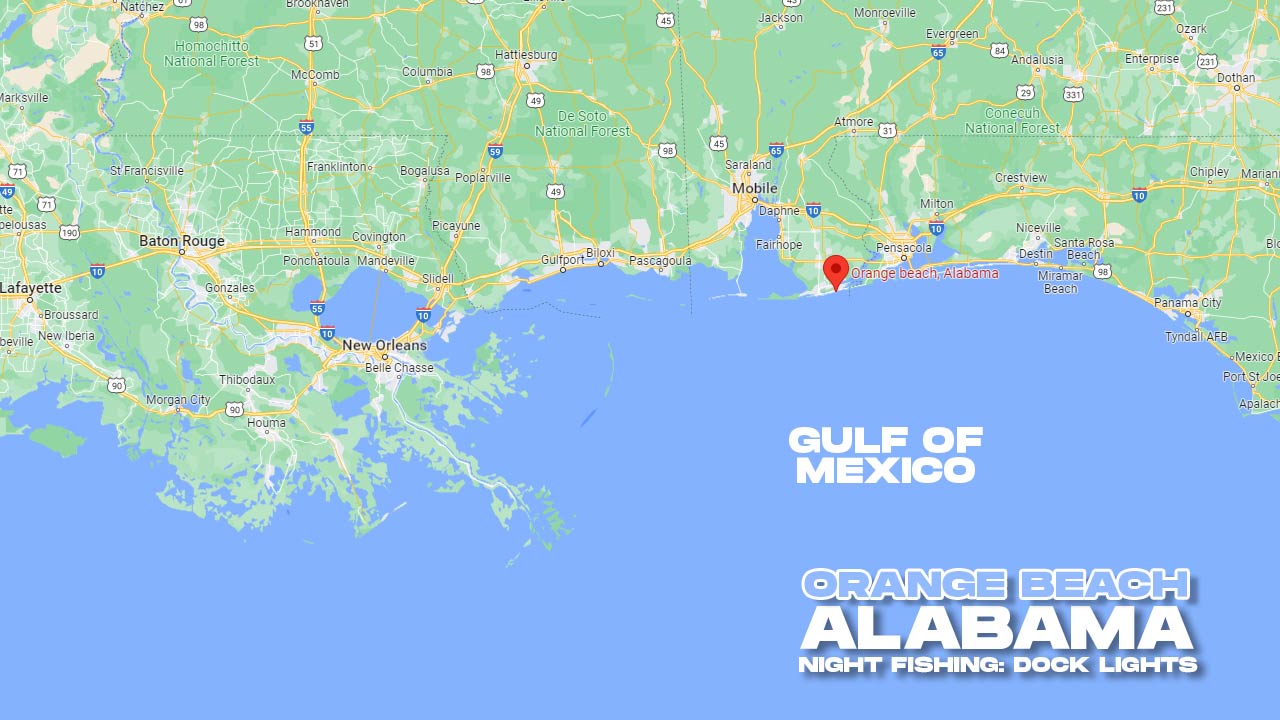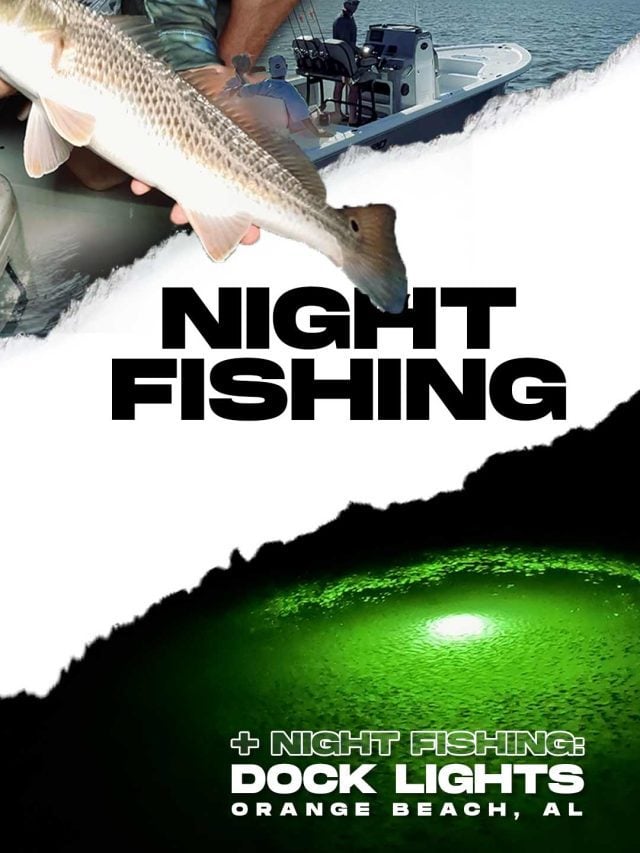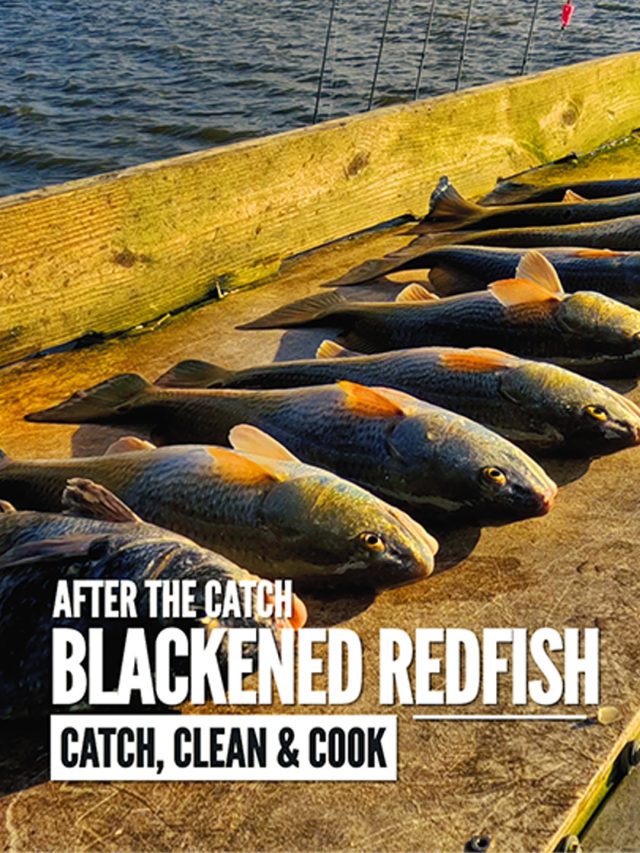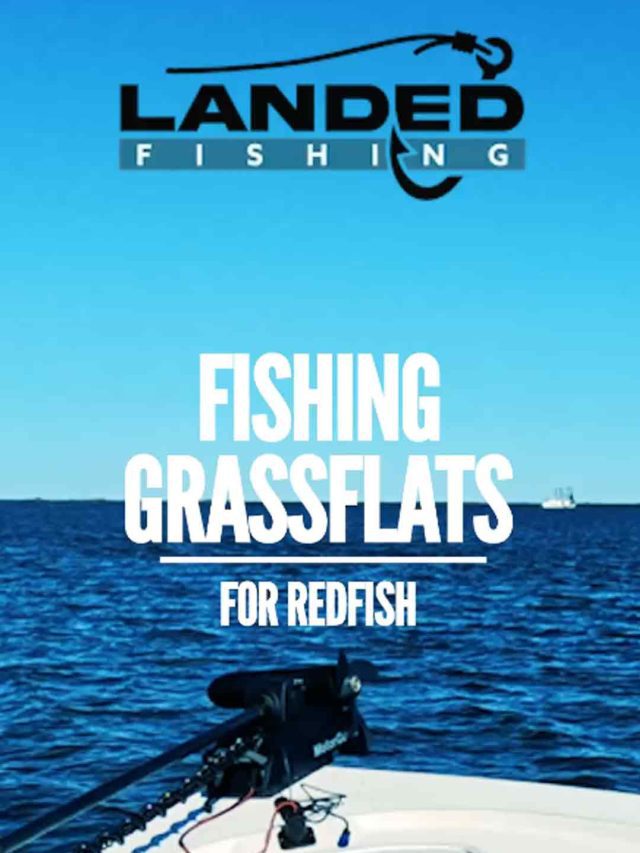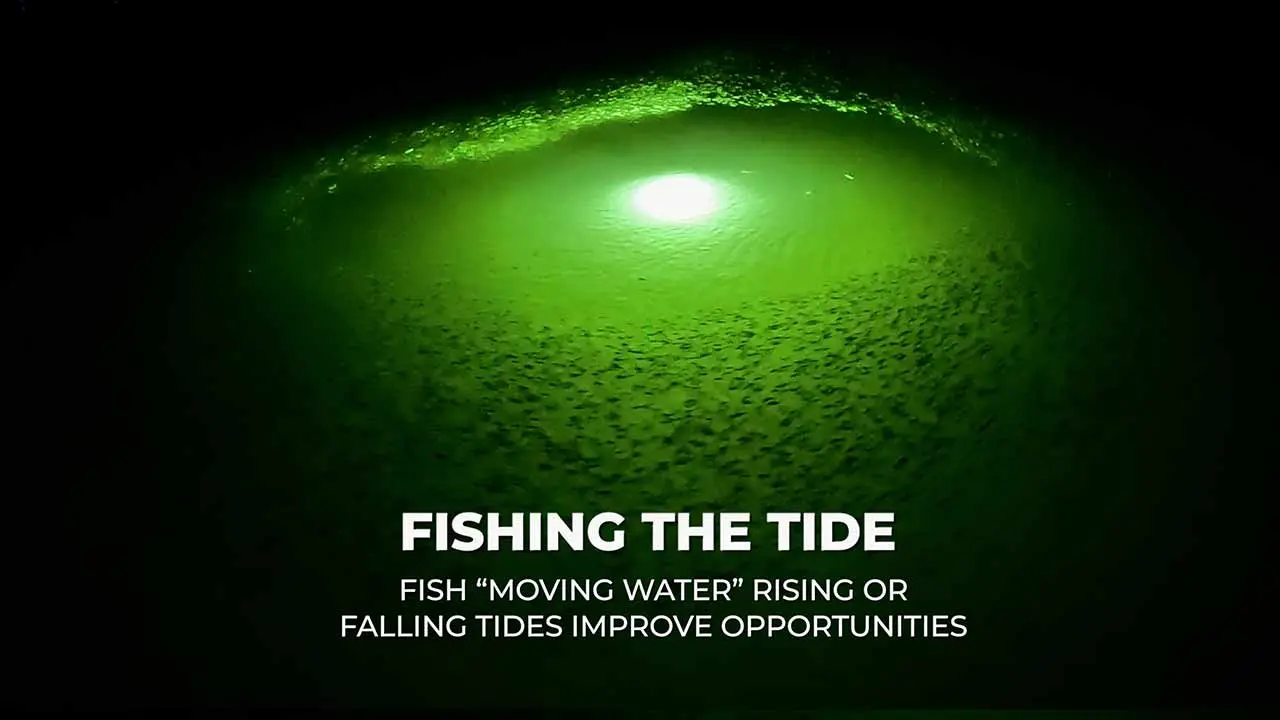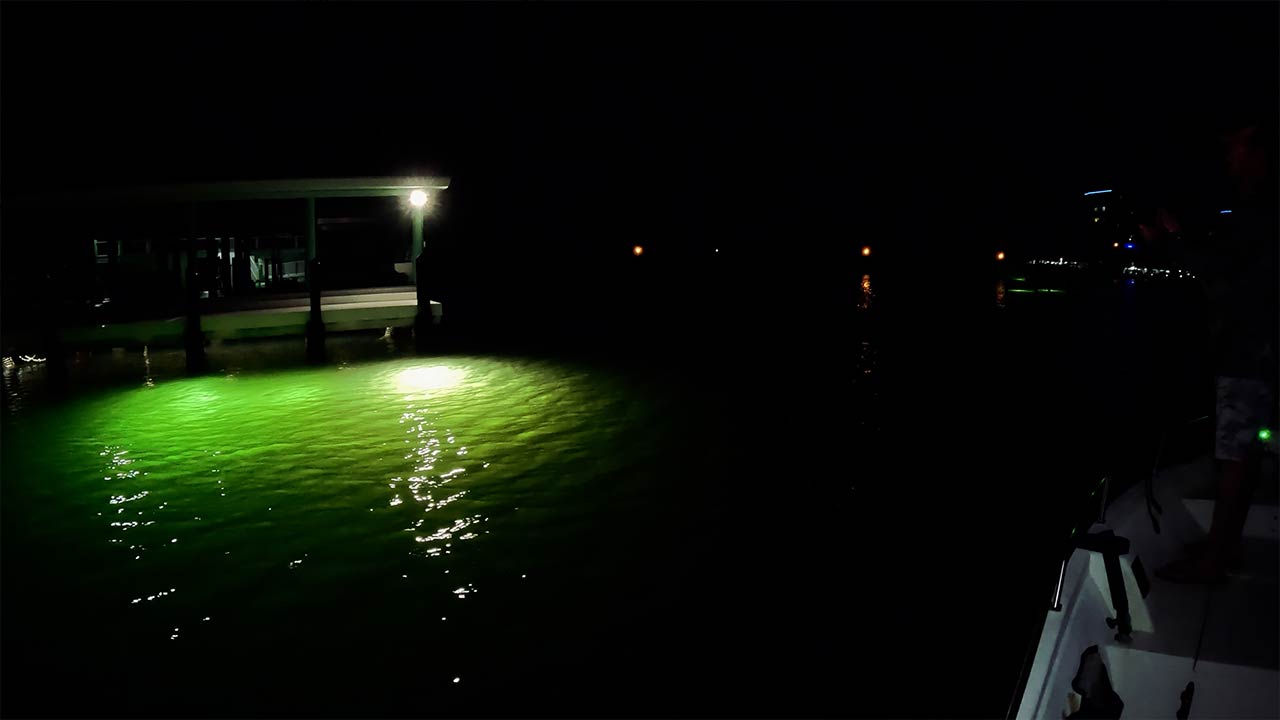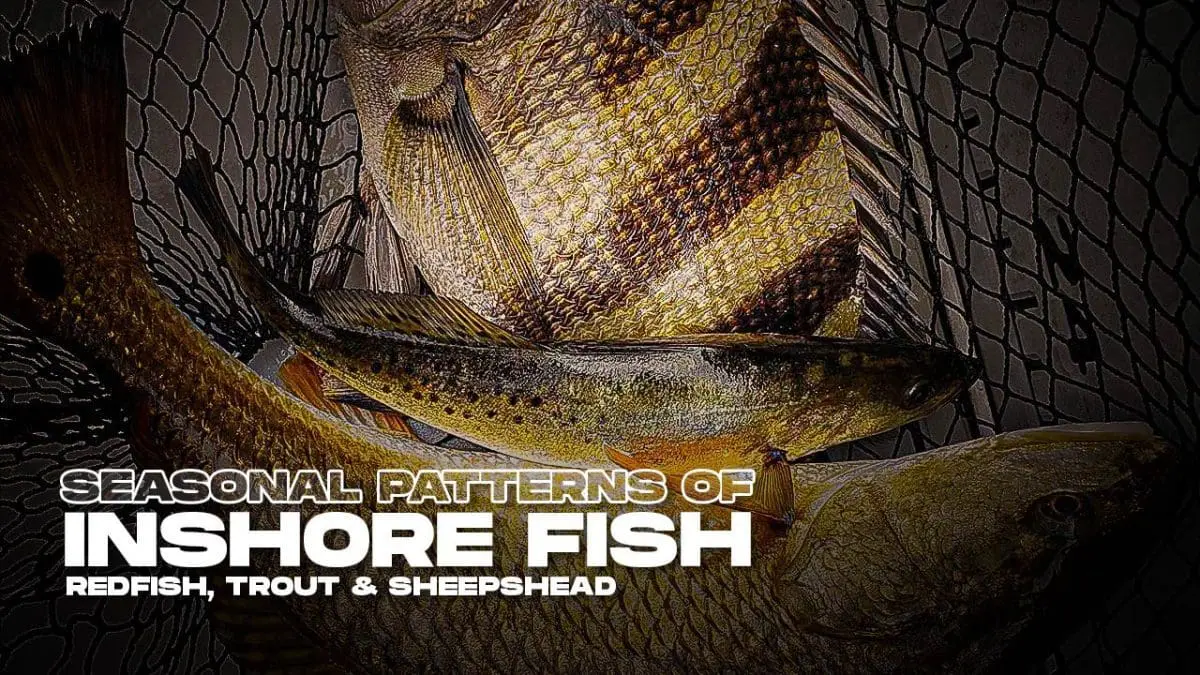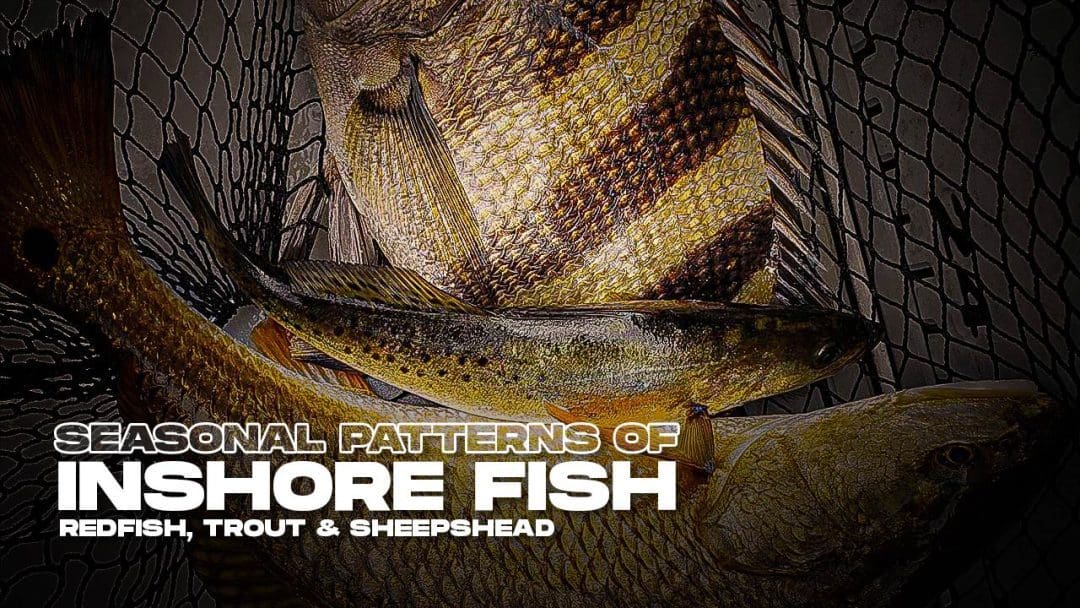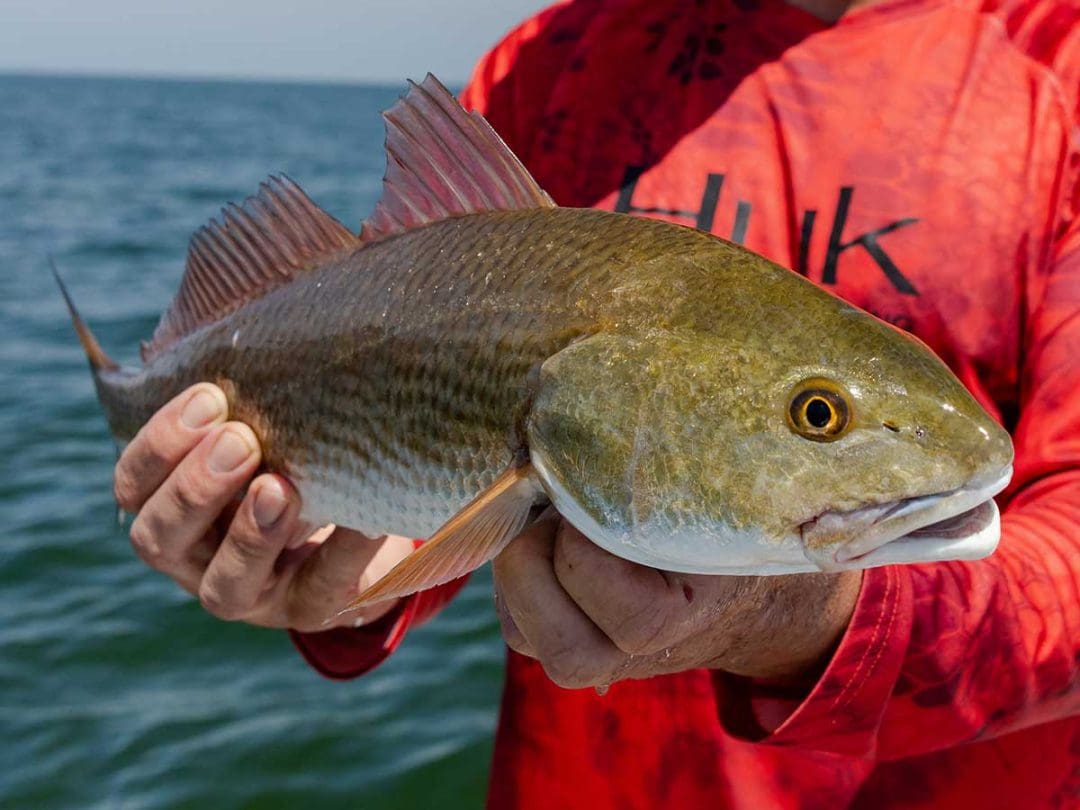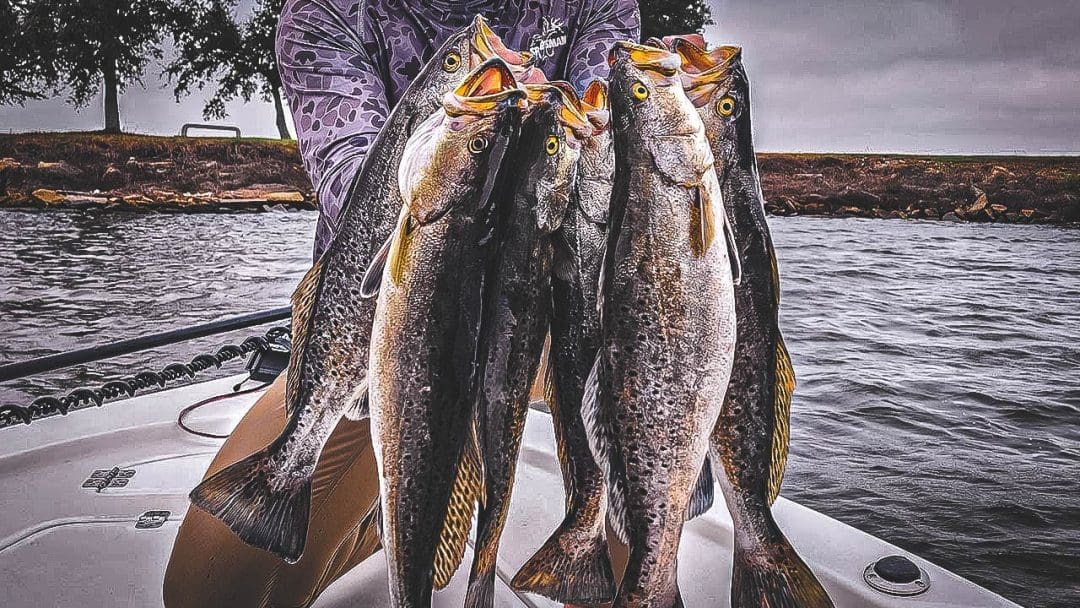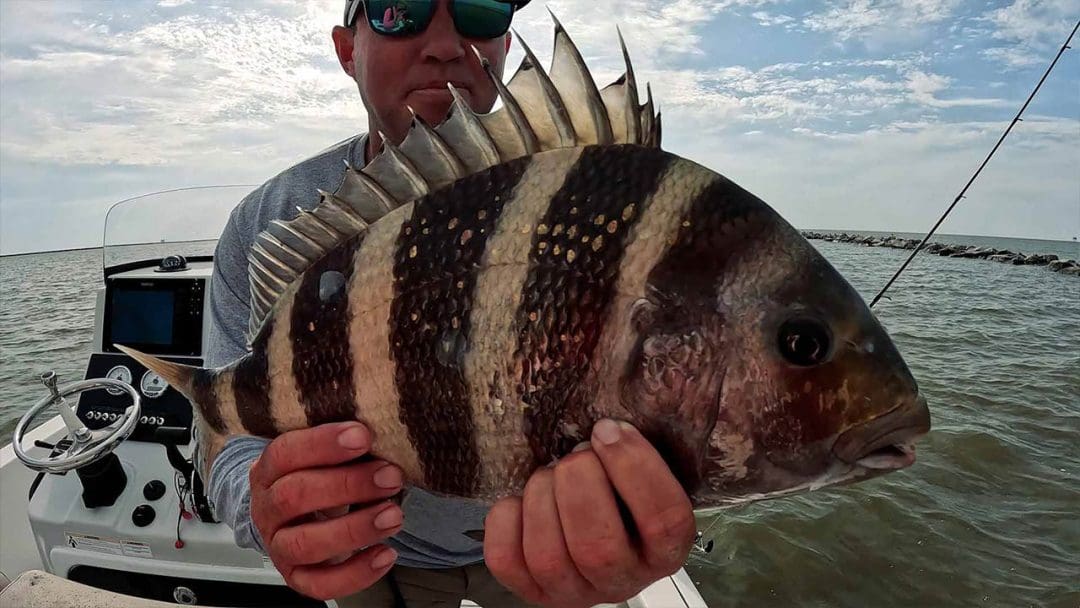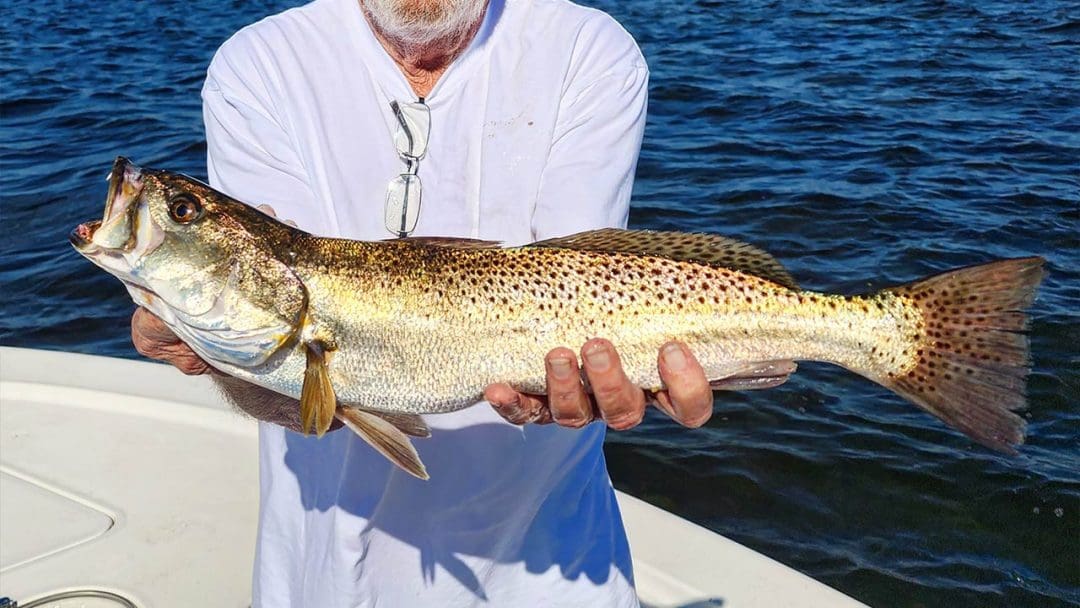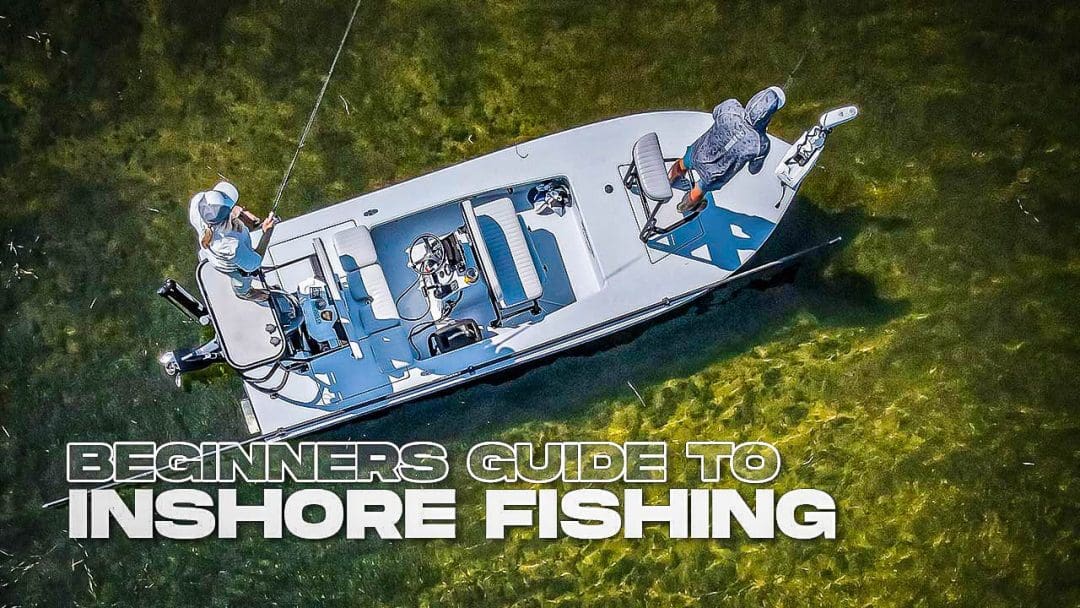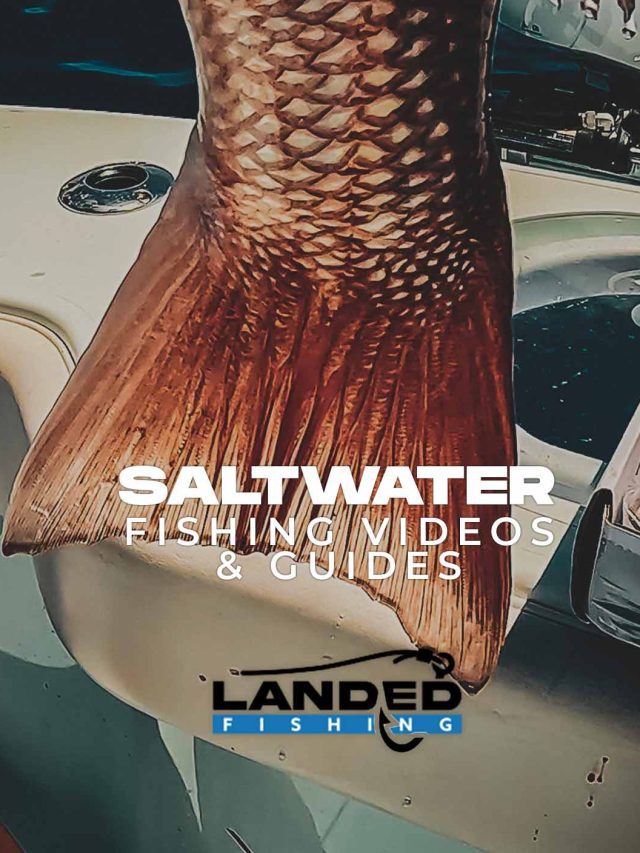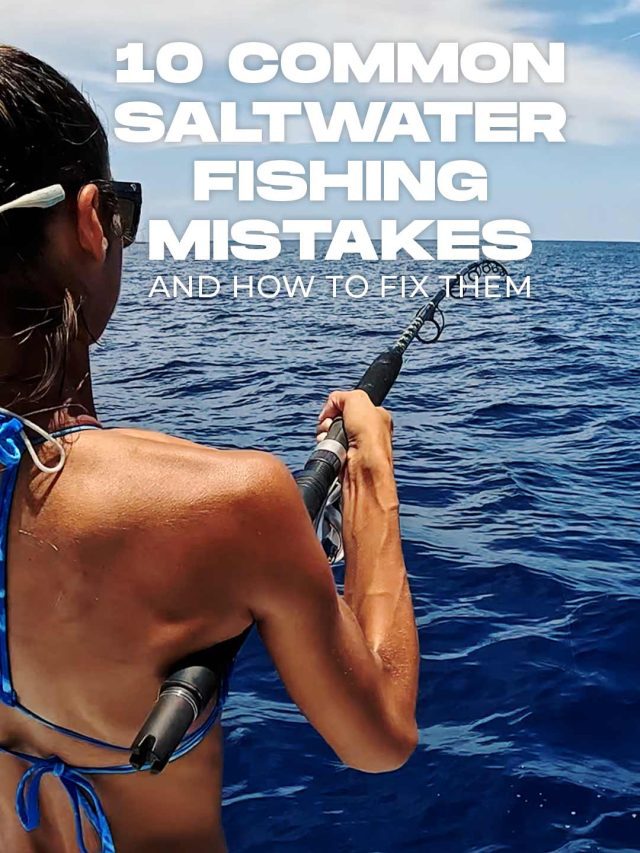What is Barotrauma?
Barotrauma is a condition where fish may suffer injuries due to pressure changes when they are reeled up from deep waters. This typically occurs at depths of 50 feet or more, but can happen in shallower depths depending on the species. As fish are brought up, gases in their body cavity and organs expand, causing severe bloating and displacement of organs.
The swim bladder, an important organ for regulating buoyancy, is primarily responsible for this gas expansion. If bloated fish are released back into the water, they may float on the surface and struggle to swim back down. This can result in death or make them vulnerable to predators.
To help mitigate reef fish discard mortality and promote sustainable fishing, it is important to adopt best release practices. These practices such as venting or a descending device greatly enhance the survival rate of released reef fish and help minimize waste in the fishery.
Venting vs Descending Fish:
Discover the essential techniques for venting and descending reef fish with our comprehensive guide. Ensure the survival of your catches and contribute to sustainable fishing practices.
Understanding the Benefits + Differences between Venting & Descending Fish
Venting and descending are two techniques used to alleviate barotrauma in fish caught at depth, promoting their survival after release.
Venting Fish on Release
Venting involves puncturing the swim bladder with a specialized tool, allowing the trapped gases to escape. This reduces bloating and enables the fish to regain its equilibrium.
Venting is typically recommended for fish showing signs of severe bloating, such as a distended abdomen.
Fish Descending Tool
Descending, on the other hand, involves using a weighted device to return the fish back to its original depth. This helps equalize the pressure and allows the swim bladder to recompress naturally.
Descending is most effective when releasing fish that appear healthy but are unable to swim back down on their own.
Which is Better? Fish Descending Tool or Fish Venting
Both techniques aim to enhance the chances of survival for released fish. However, it’s essential to assess the severity of barotrauma and choose the appropriate method accordingly. Remember, practicing responsible fishing and promptly addressing barotrauma can contribute to the overall conservation and sustainability of our fisheries.
Fishing guide for venting deep water fish during catch and release:
It is important to note that intentionally popping the swim bladder, also known as “venting,” is a technique that should only be performed by experienced anglers when absolutely necessary and with caution. Popping the swim bladder is done to help a fish suffering from barotrauma (excessive pressure changes) to release gas and descend back to the appropriate depth.
How to: Venting Deepwater & Reef Fish
Assess the Fish:
If you catch a deepwater saltwater fish and notice signs of barotrauma, such as a distended or bloated belly, bulging eyes, or the inability to submerge, it may be necessary to consider venting.
Prepare Venting Tools:
Use a venting tool specifically designed for this purpose. These tools typically have a sharp, hollow needle or a small pointed device. Ensure the tool is clean and disinfected to minimize the risk of infection.
Handle the Fish with Care:
Wet your hands before handling the fish to minimize damage to its protective slime coating. Support the fish gently but firmly, avoiding excessive pressure or squeezing.
Locate the Venting Point:
The swim bladder is usually located near the base of the pectoral fins on either side of the fish. Look for a soft area or a slight indentation where the needle can be inserted.
Insert the Needle:
Gently insert the venting tool into the swim bladder at a slight angle, ensuring you penetrate the bladder without causing additional harm to internal organs. You should observe the release of gas or bubbles from the needle.
Release the Fish:
After venting, quickly but carefully release the fish back into the water, ensuring it is oriented properly for swimming. Allow the fish time to recover and regain its equilibrium before swimming away.
It is essential to note that venting should only be performed as a last resort and with caution. It is always best to minimize stress on the fish and avoid catching deep water species if you do not have the necessary experience or tools for venting.
It is crucial to follow local regulations and guidelines regarding fish handling, catch and release practices, and the use of venting tools. Additionally, consider using descending devices or fishing at depths where fish are less likely to suffer from barotrauma to minimize the need for venting
Fishing Descending Devices: Best Practices and Tips:
Tips and best practices to maximize the effectiveness of descending devices when releasing fish suffering from barotrauma:
Fishing with descending devices has become increasingly important in promoting sustainable fishing practices and conserving fish populations. These devices help release fish suffering from barotrauma, a condition caused by rapid pressure changes that can affect their ability to swim and survive. In this comprehensive guide, we will explore the benefits of using descending devices, their different types, and step-by-step instructions on how to use them effectively to increase fish survival rates.
Guide to Using Descending Devices for Fishing
Understanding Barotrauma:
We begin by explaining the concept of barotrauma and its impact on fish caught at depth.
Learn about the physiological effects of pressure changes, such as distended swim bladders and bulging eyes, which can prevent fish from returning to their natural depths.
Importance of Descending Devices:
Discover why descending devices have become important tools in promoting catch and release practices.
Explore descending devices role in releasing fish back to appropriate depths, reducing mortality rates, and helping maintain healthy fish populations.
Types of Descending Devices:
Explore the different types of descending devices available, including venting tools, weighted hooks, and fish recompression devices.
Learn about fish descending devices features, advantages, and suitability for various fishing scenarios.
Proper Techniques for Using Descending Devices:
Follow step-by-step instructions on how to use descending devices effectively. From proper fish handling and venting procedures to attaching weights and releasing fish, gain practical knowledge that ensures the safe and successful use of these tools.
Be Prepared and Equipped:
Carry descending devices specifically designed for the species and sizes of fish you are targeting. Different devices may be required for various scenarios, so it’s essential to have a variety of options available in your fishing gear.
Handle Fish with Care:
When catching fish that may require descending, minimize stress and injury by handling them gently.
Wet your hands before touching the fish to protect their slime coating and avoid removing any scales. Avoid squeezing or applying excessive pressure to the fish’s body.
Determining the Need for Descending:
Assess the fish for signs of barotrauma, such as bloated belly, bulging eyes, or inability to submerge.
Not all fish will require descending, so it’s important to make an accurate determination before using the device. If in doubt, it’s better to err on the side of caution and utilize a descending device.
Select the Appropriate Depth:
Before releasing the fish, estimate the appropriate depth at which it should be returned to regain its equilibrium. Consider factors like the species’ natural habitat, water temperature, and available structure.
Returning the fish to a depth where it can swim without excessive pressure on its swim bladder is important for its chances of survival.
Adjust Weights Properly:
Ensure that you attach the appropriate amount of weight to the descending device to assist in the fish’s descent. The weight should be sufficient to overcome the buoyancy of the fish and help it reach the desired depth quickly.
Use weights specifically designed for descending devices or improvised options like lead sinkers.
Monitor the Fish’s Release:
As you release the fish with the descending device, observe its behavior closely. Ideally, the fish should swim away energetically and descend to the desired depth without difficulty. If the fish struggles or shows signs of continued distress, additional intervention may be necessary.
Remember, the primary goal of using descending devices is to increase the chances of survival for fish suffering from barotrauma. By following these valuable tips and best practices, you can maximize the effectiveness of these devices, contribute to the conservation of fish populations, and promote responsible angling practices.
Using descending devices is a critical step in responsible fishing practices.
By understanding the impact of barotrauma, choosing the right descending device, and employing proper techniques, anglers can significantly improve fish survival rates and contribute to the long-term sustainability of fish populations. Embrace these conservation-minded practices and play an active role in protecting our precious aquatic ecosystems.
Venting & Descending Fish FAQ’s
More Fishing How-To’s
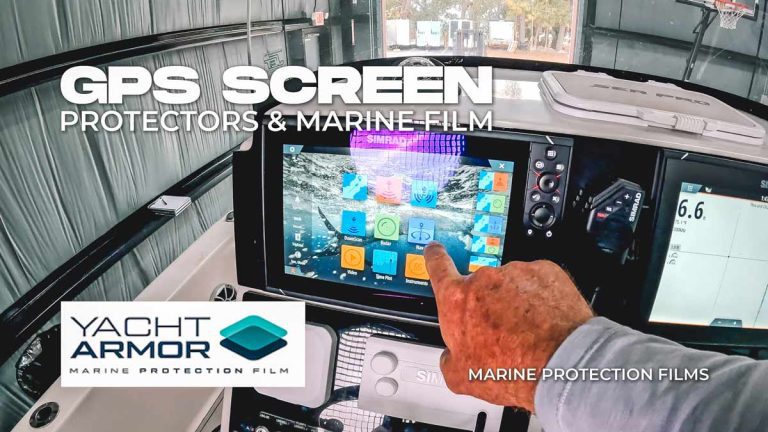
PPF Screen Protectors and Surface Protection Films When you're out on the water, the last thing you want is…

Mangrove Snapper Fishing in the GulfJoin us as we prepare for and target Mangrove Snapper, saltwater fishing along Florida's…
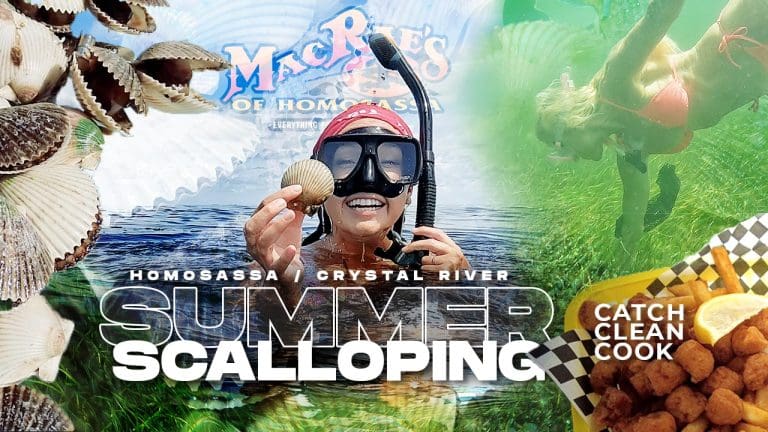
Homosassa / Crystal River Scalloping FloridaExplore scalloping along Florida's Nature Coast, join us as we head out of Homosassa…

